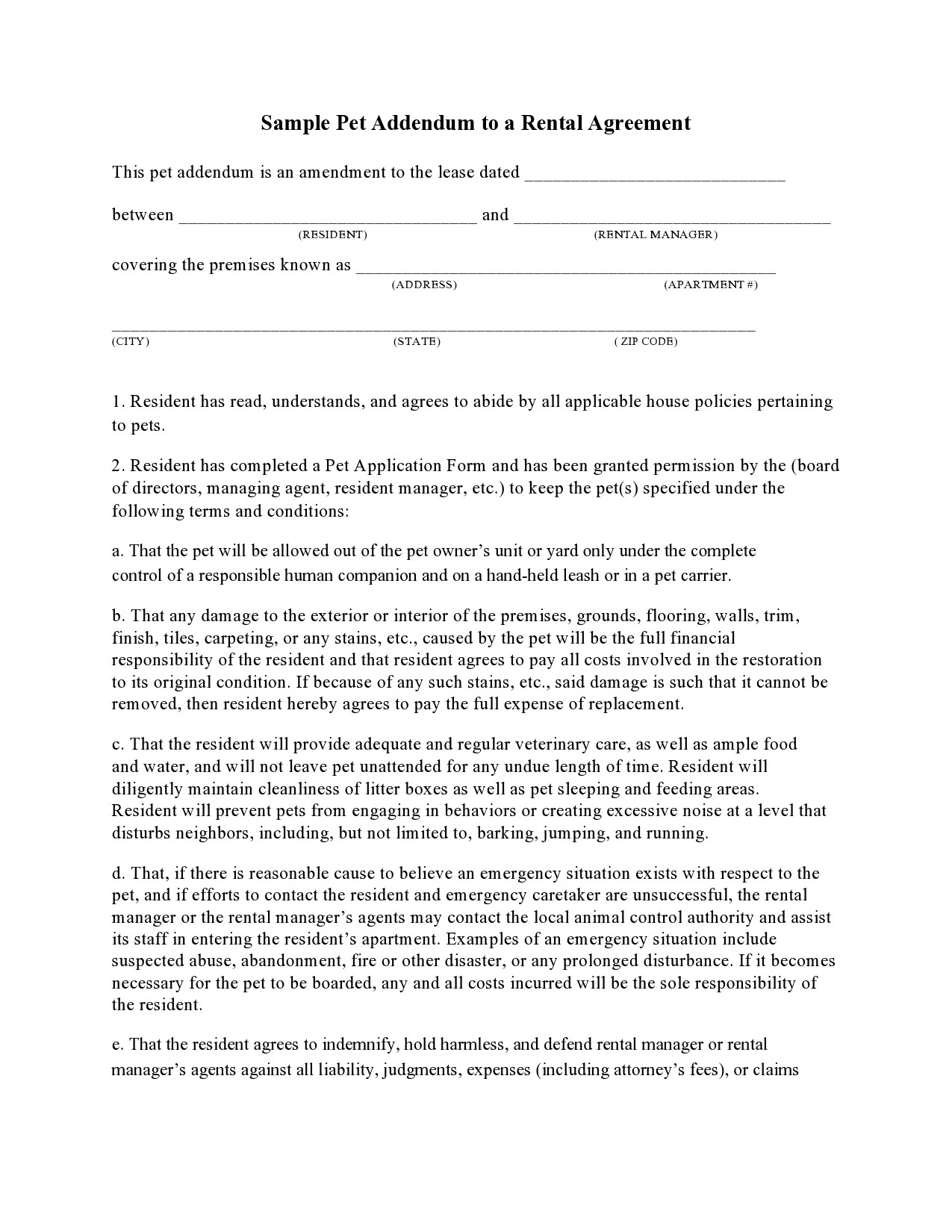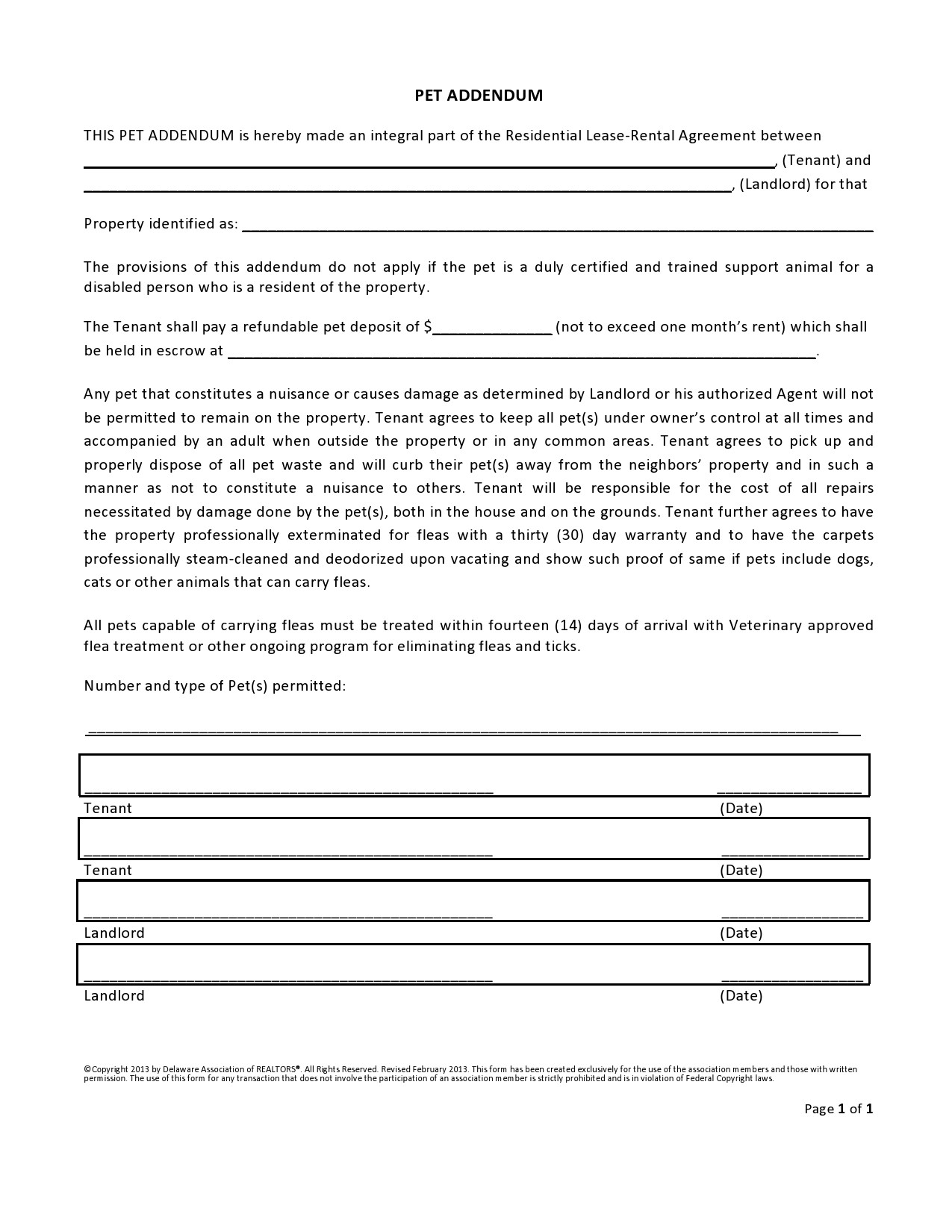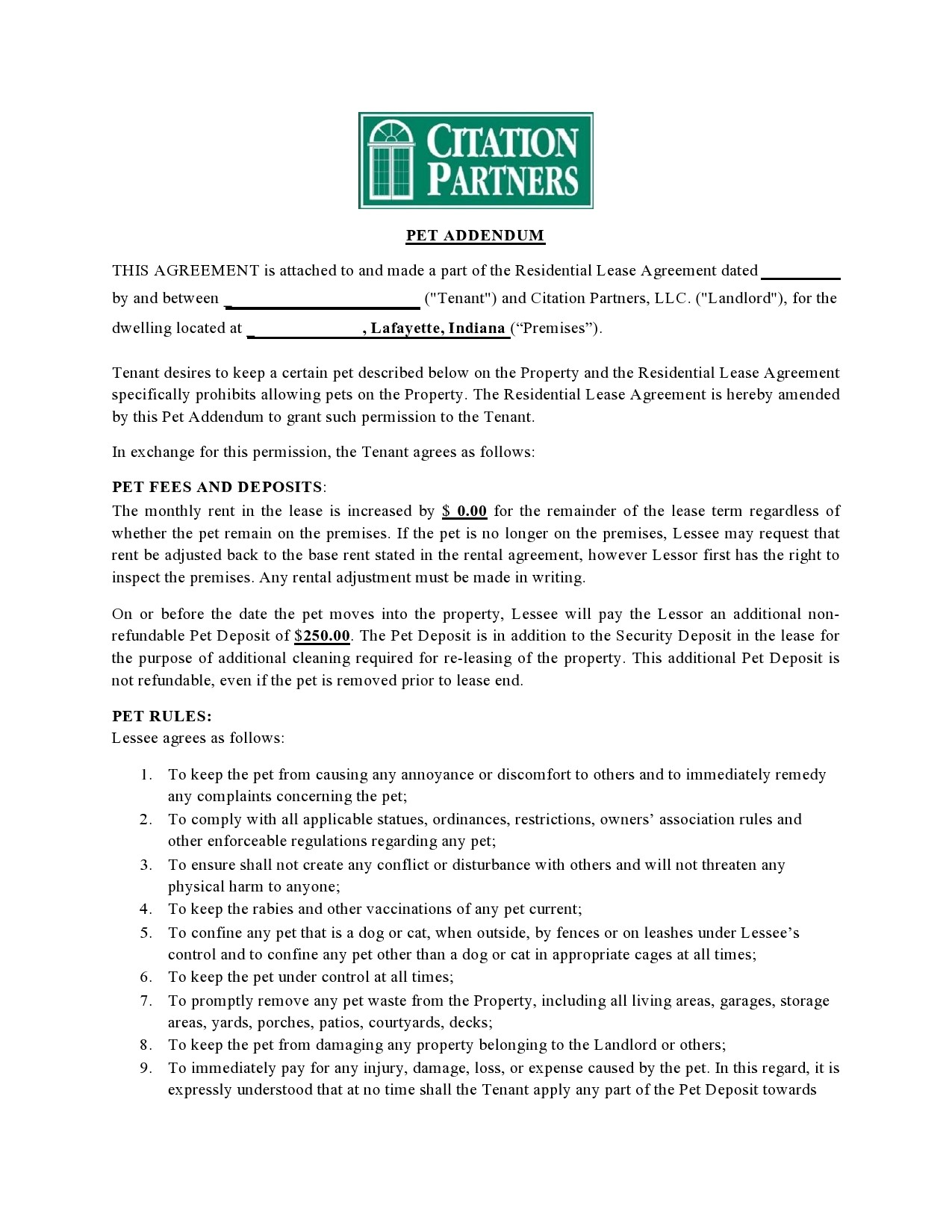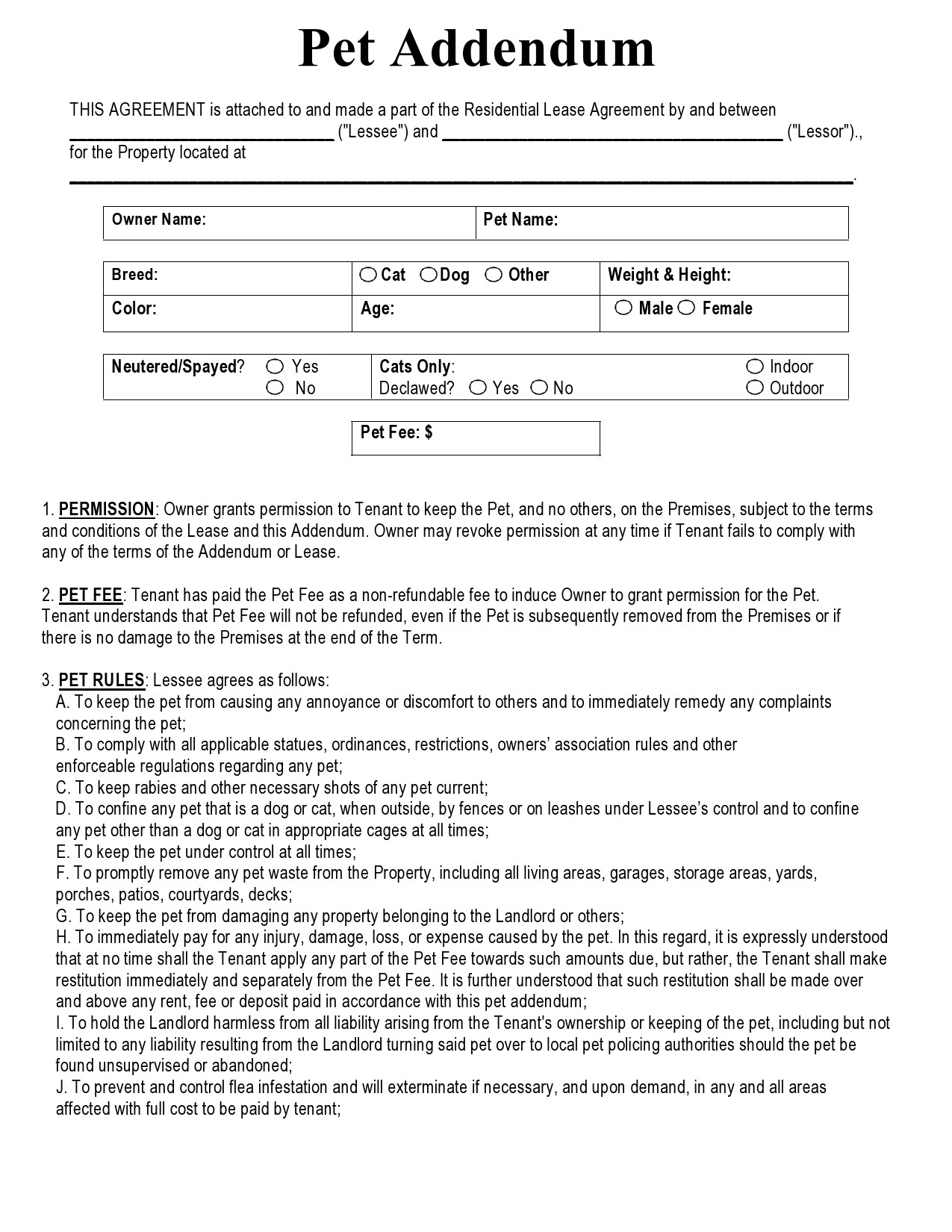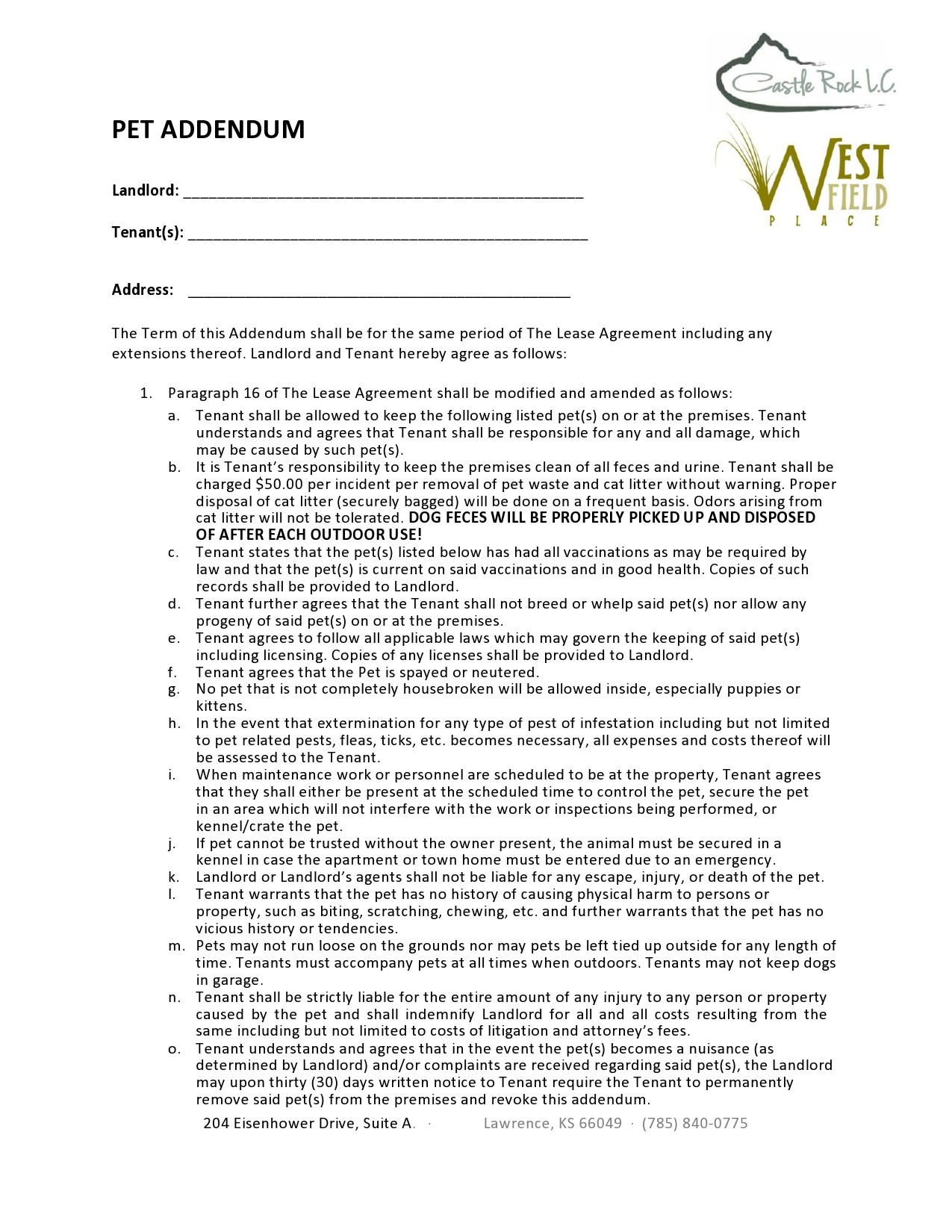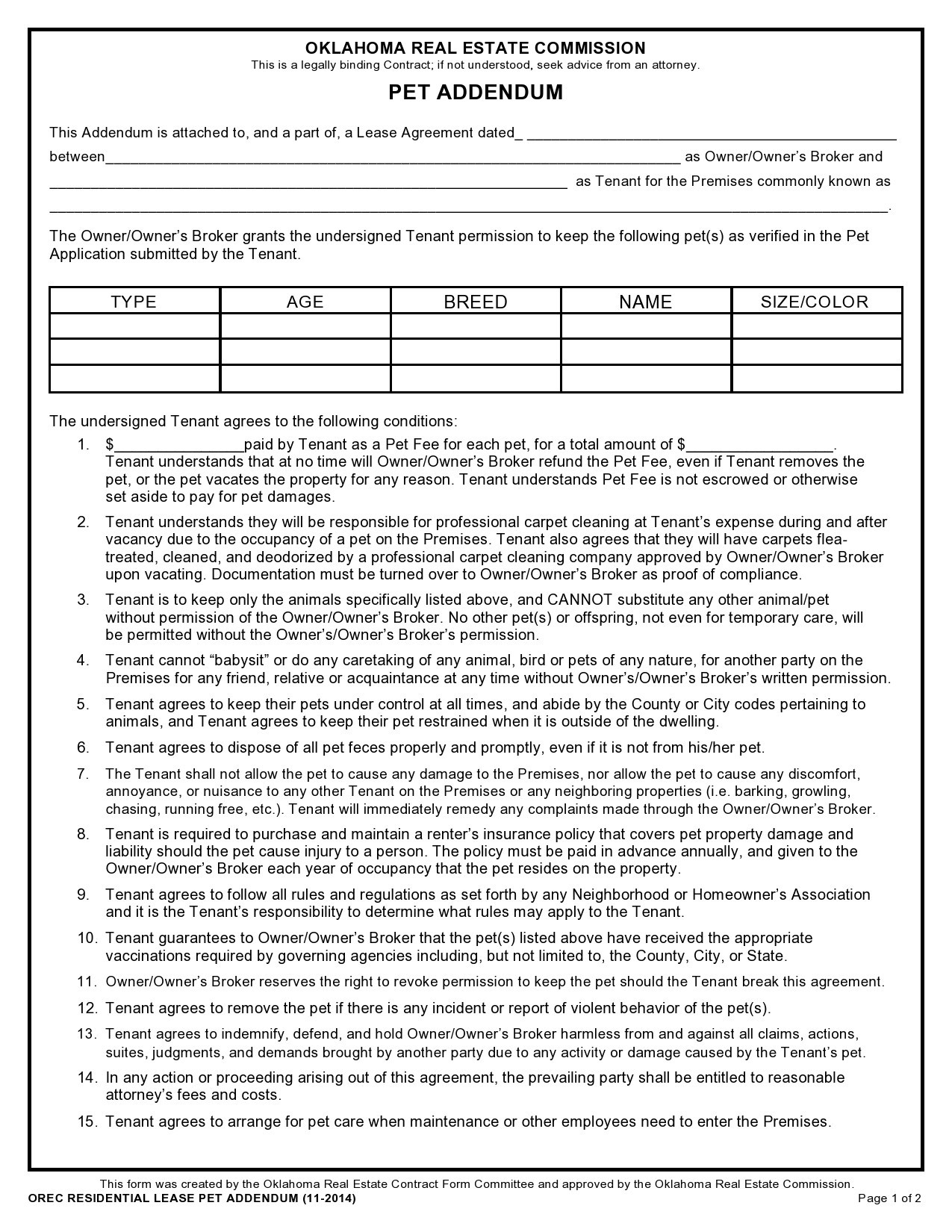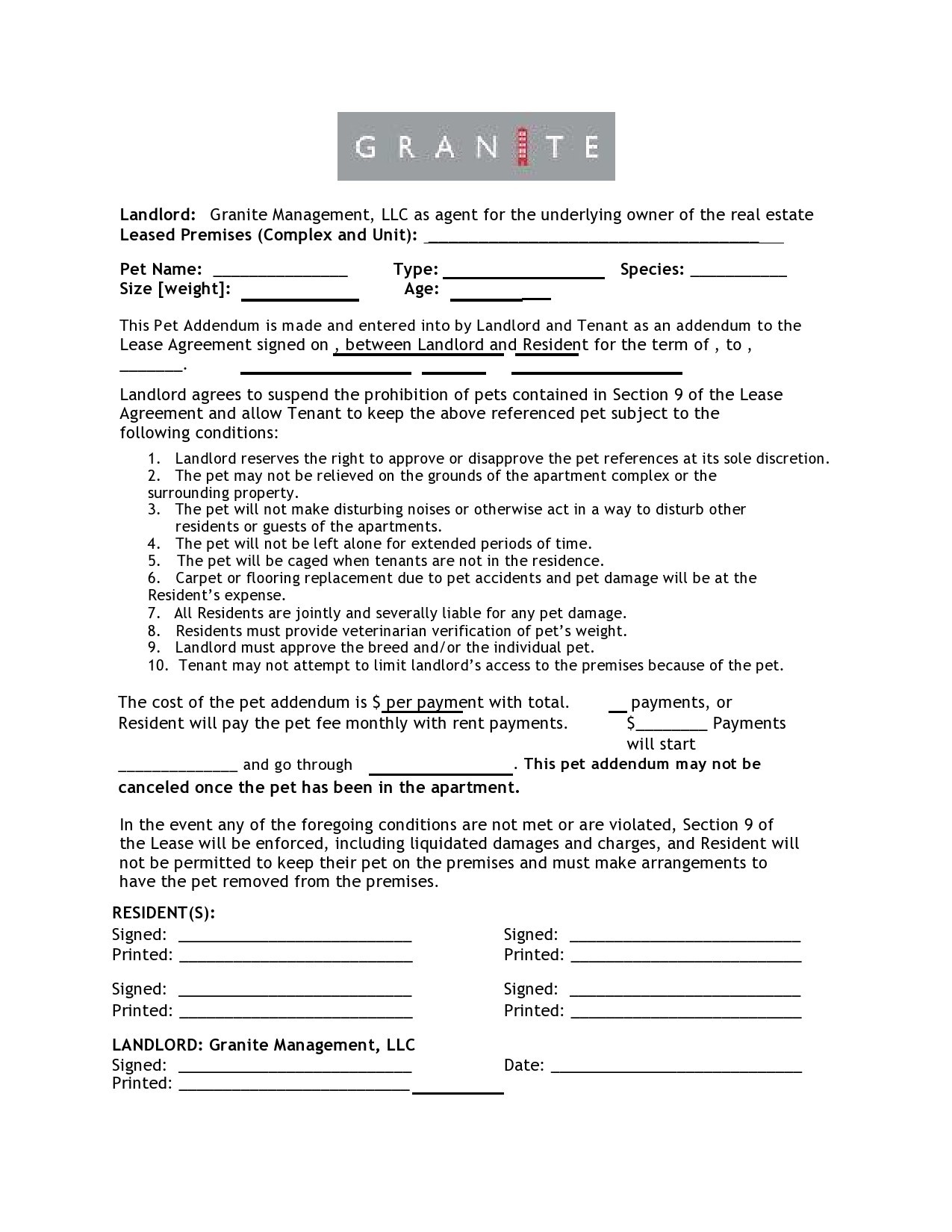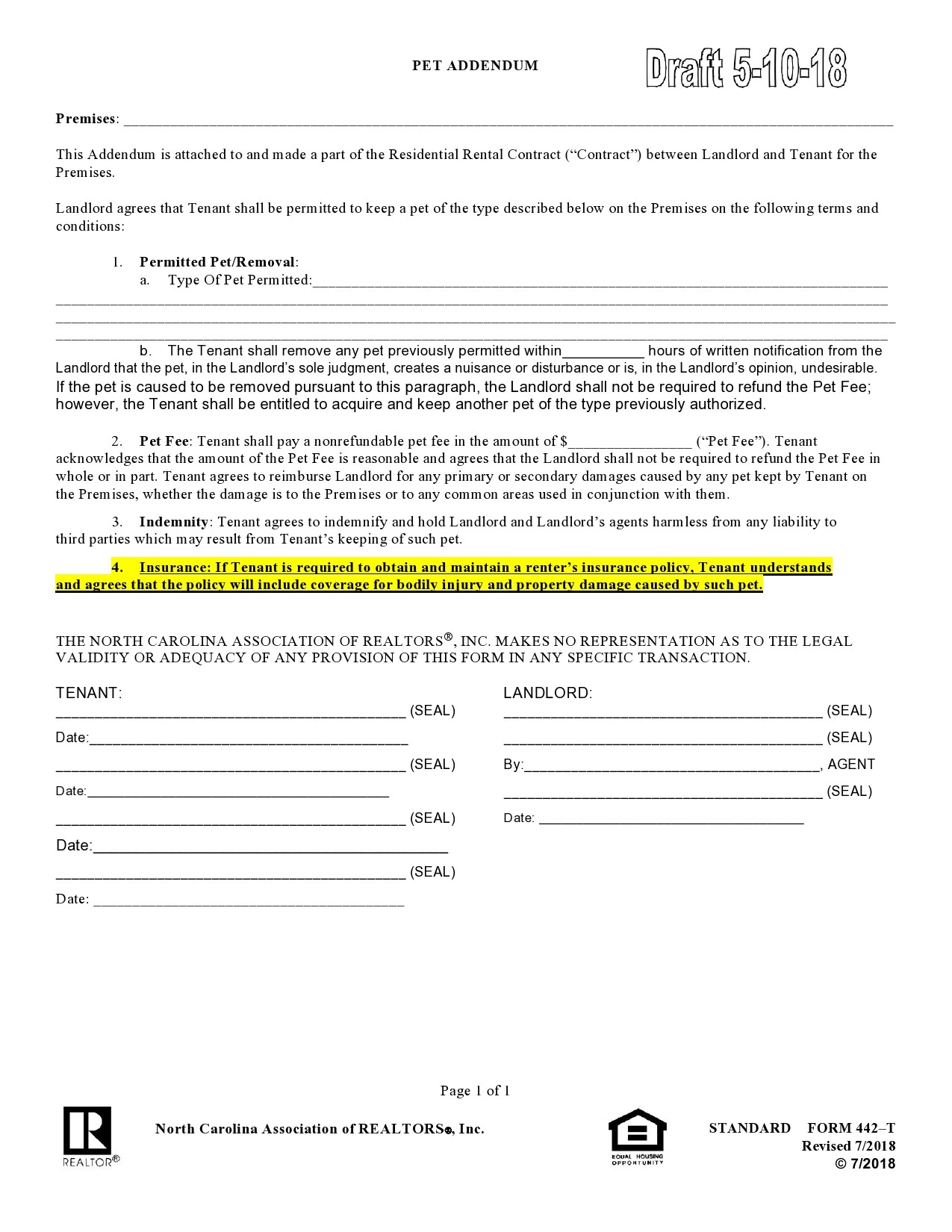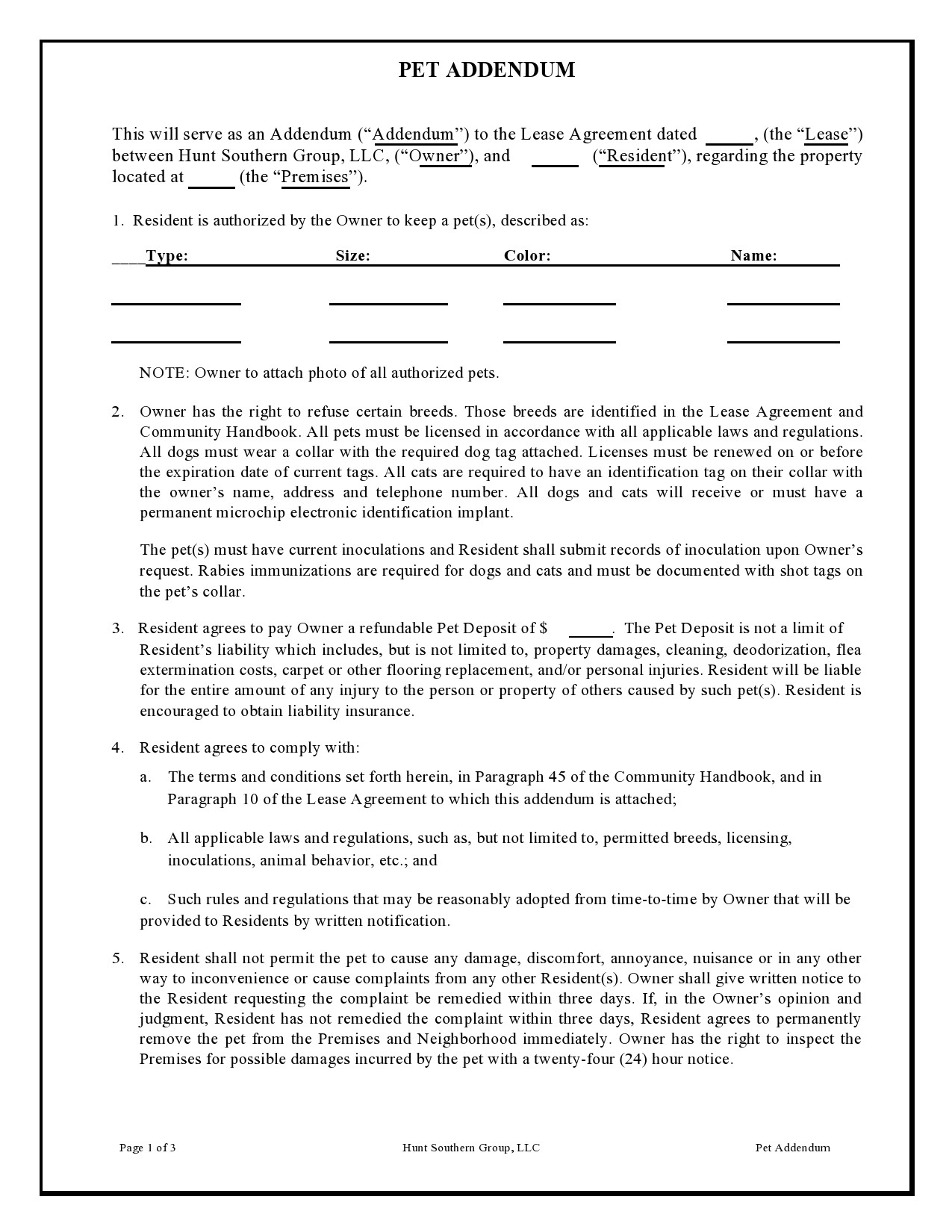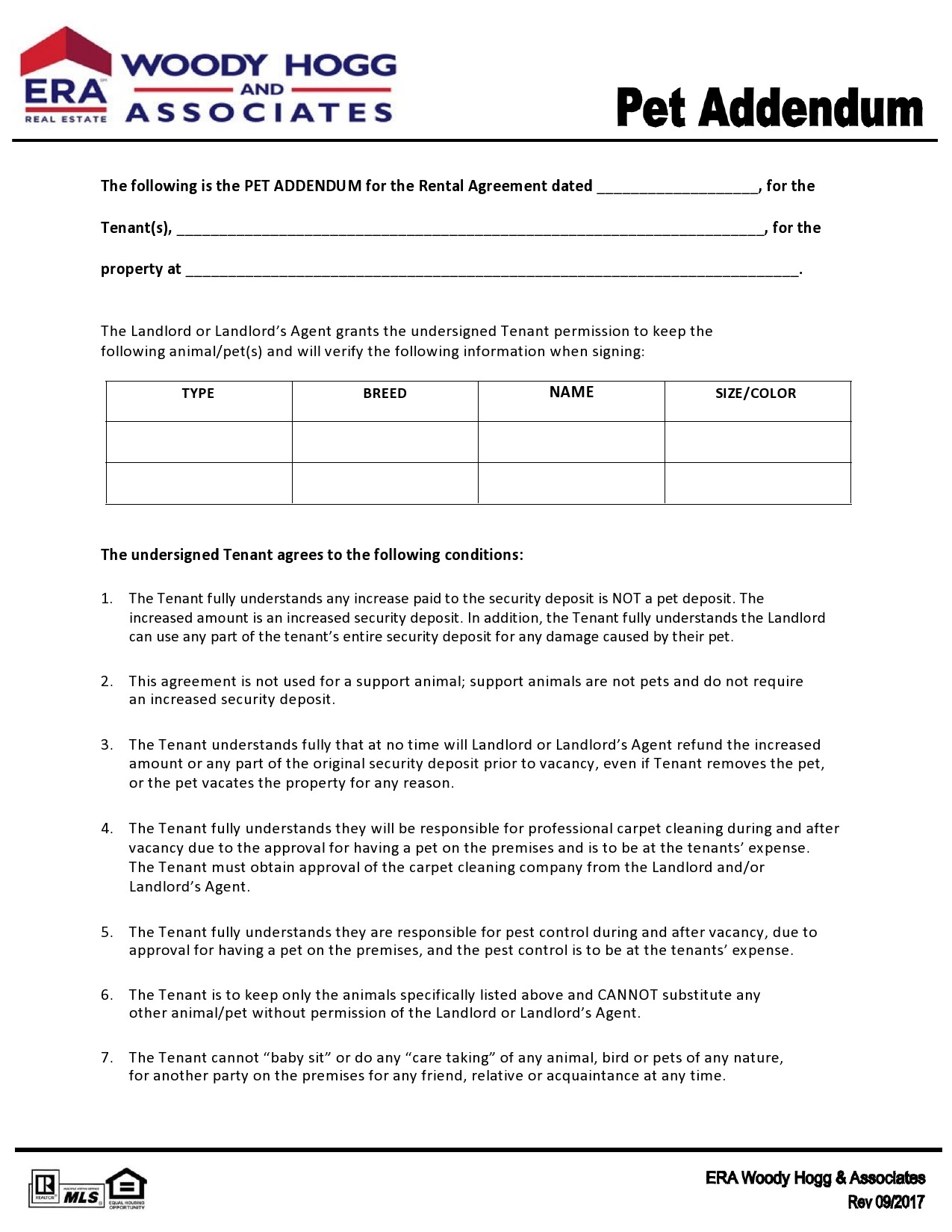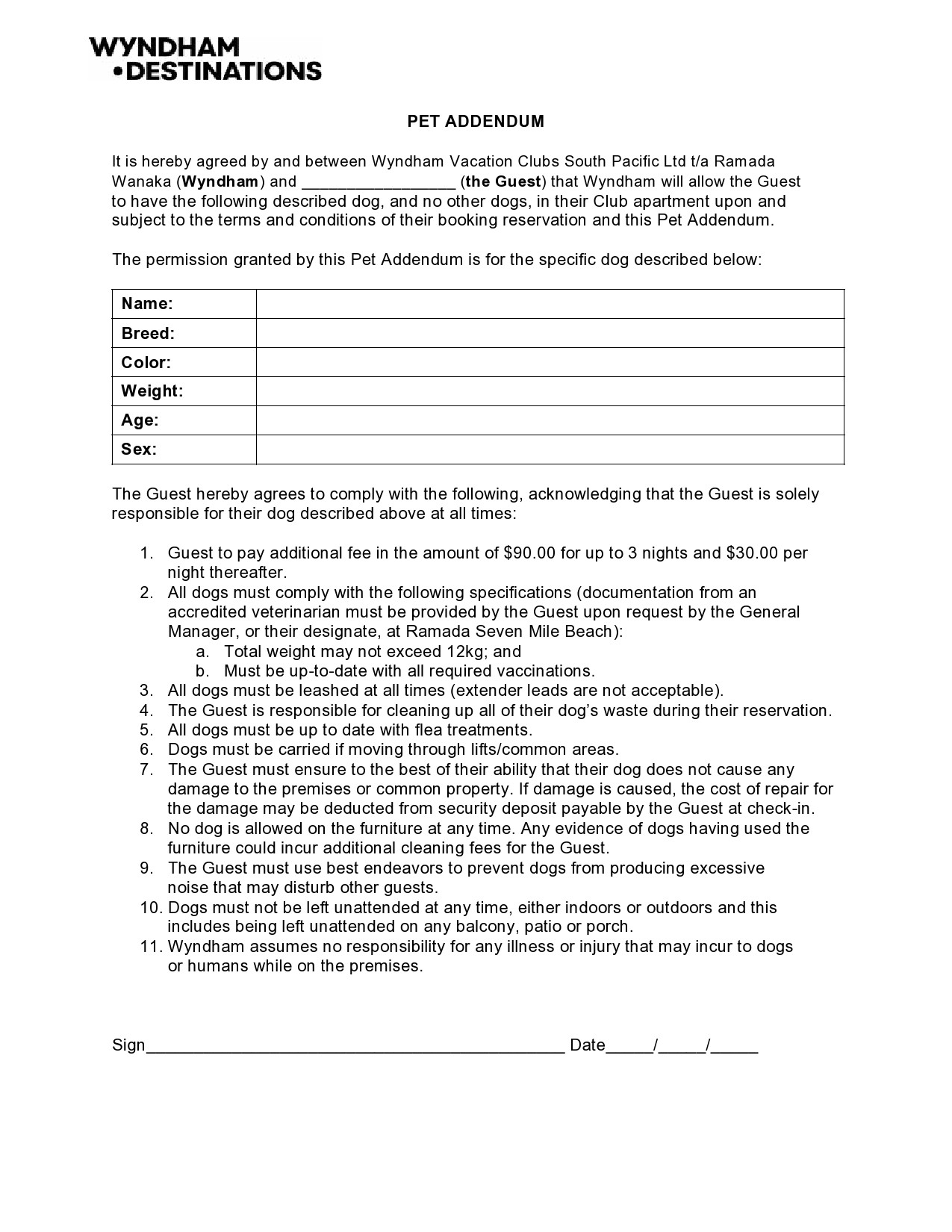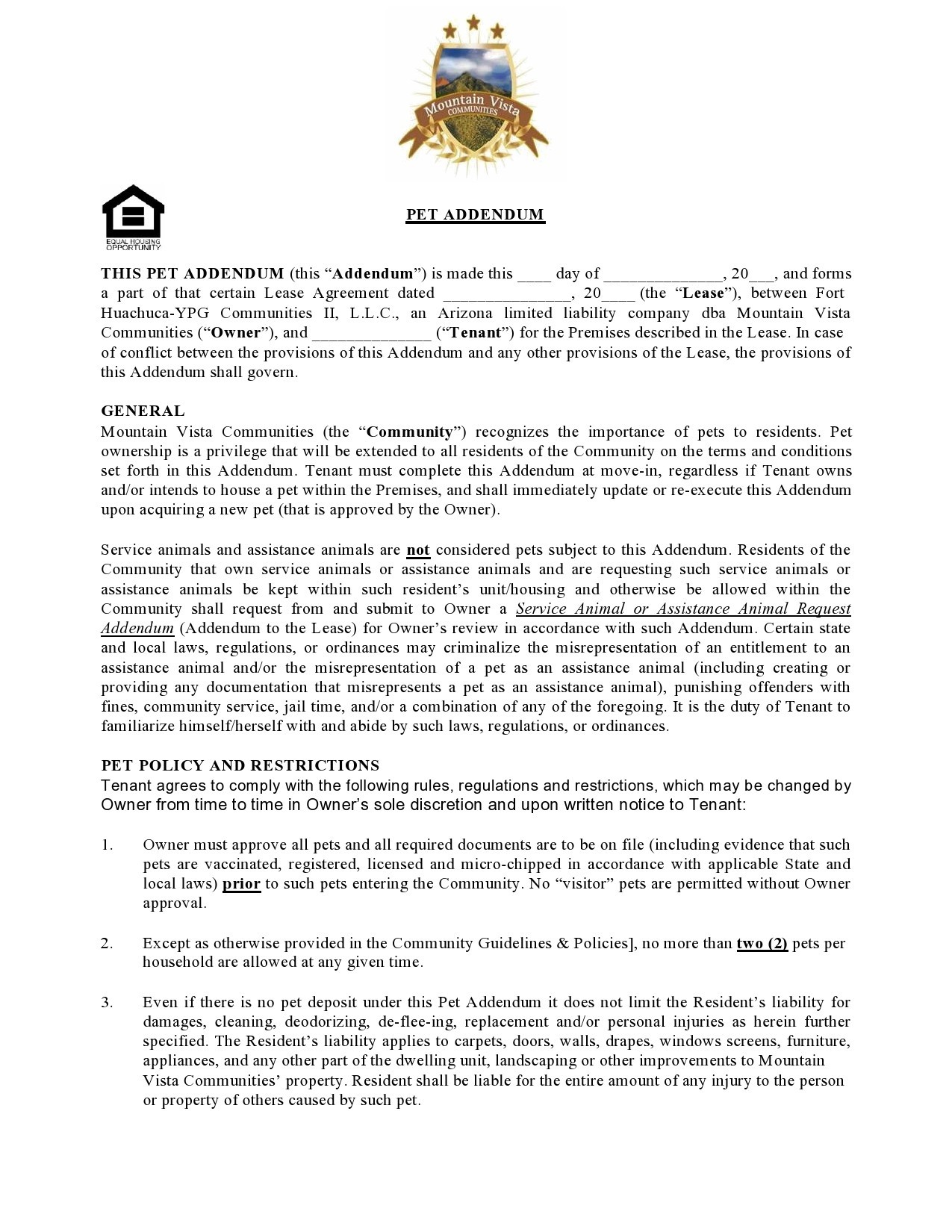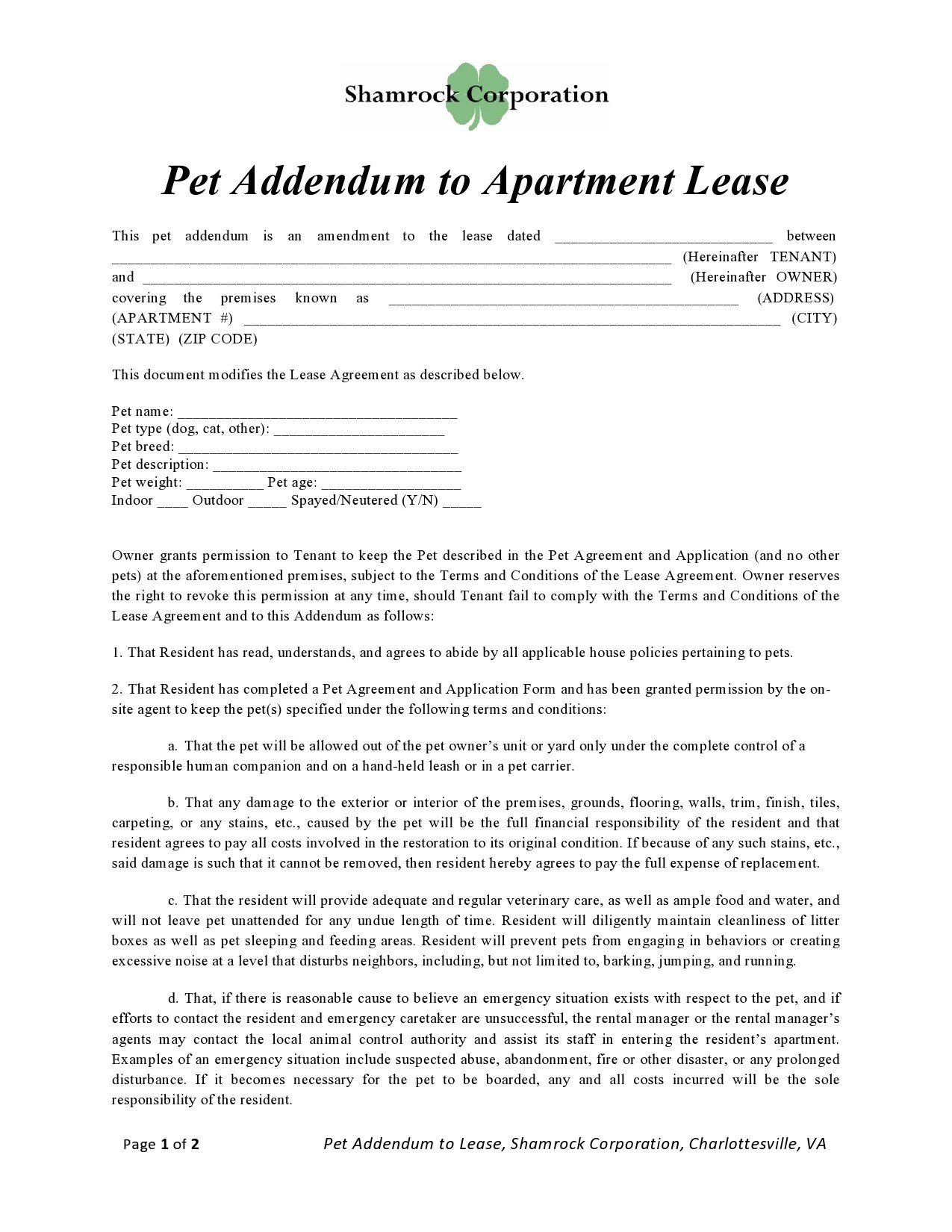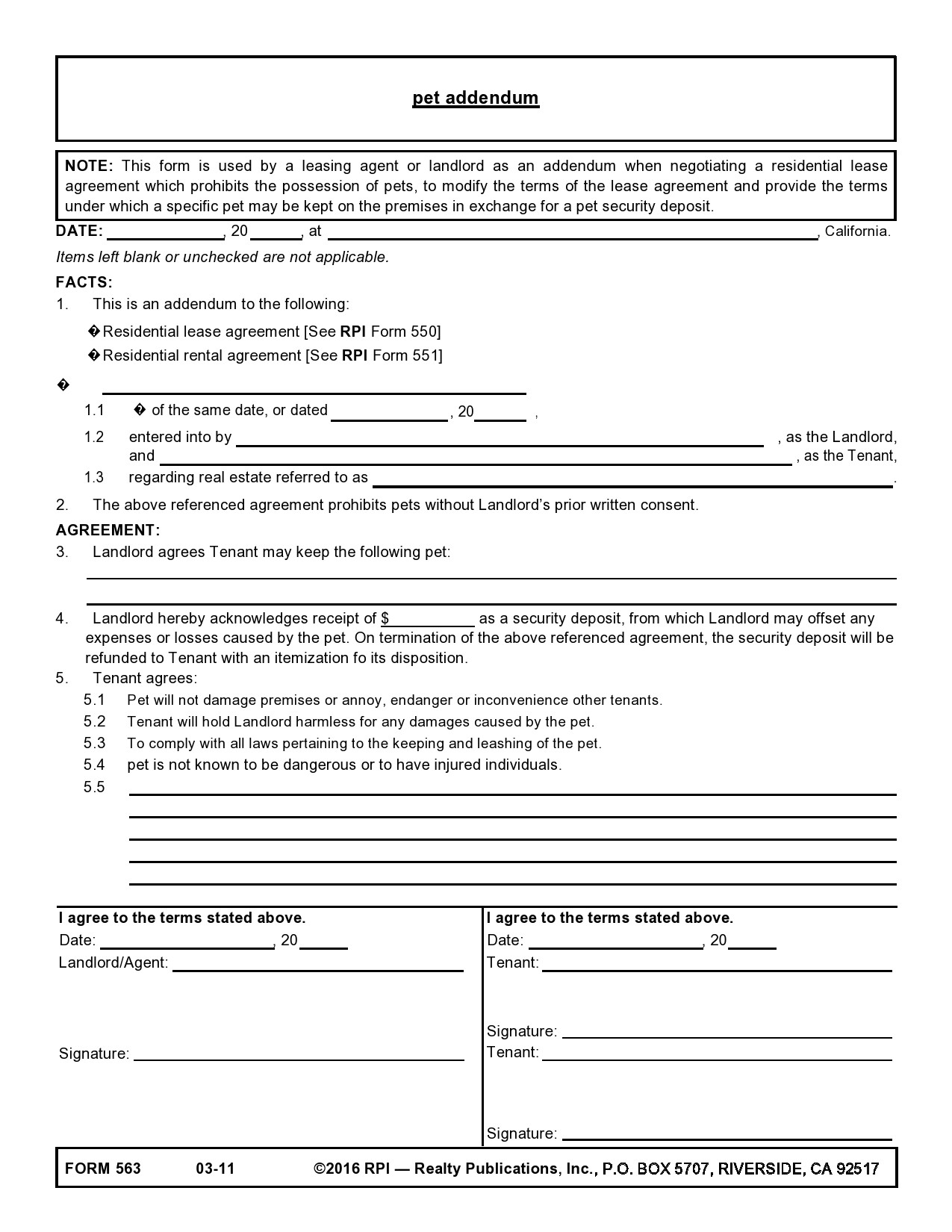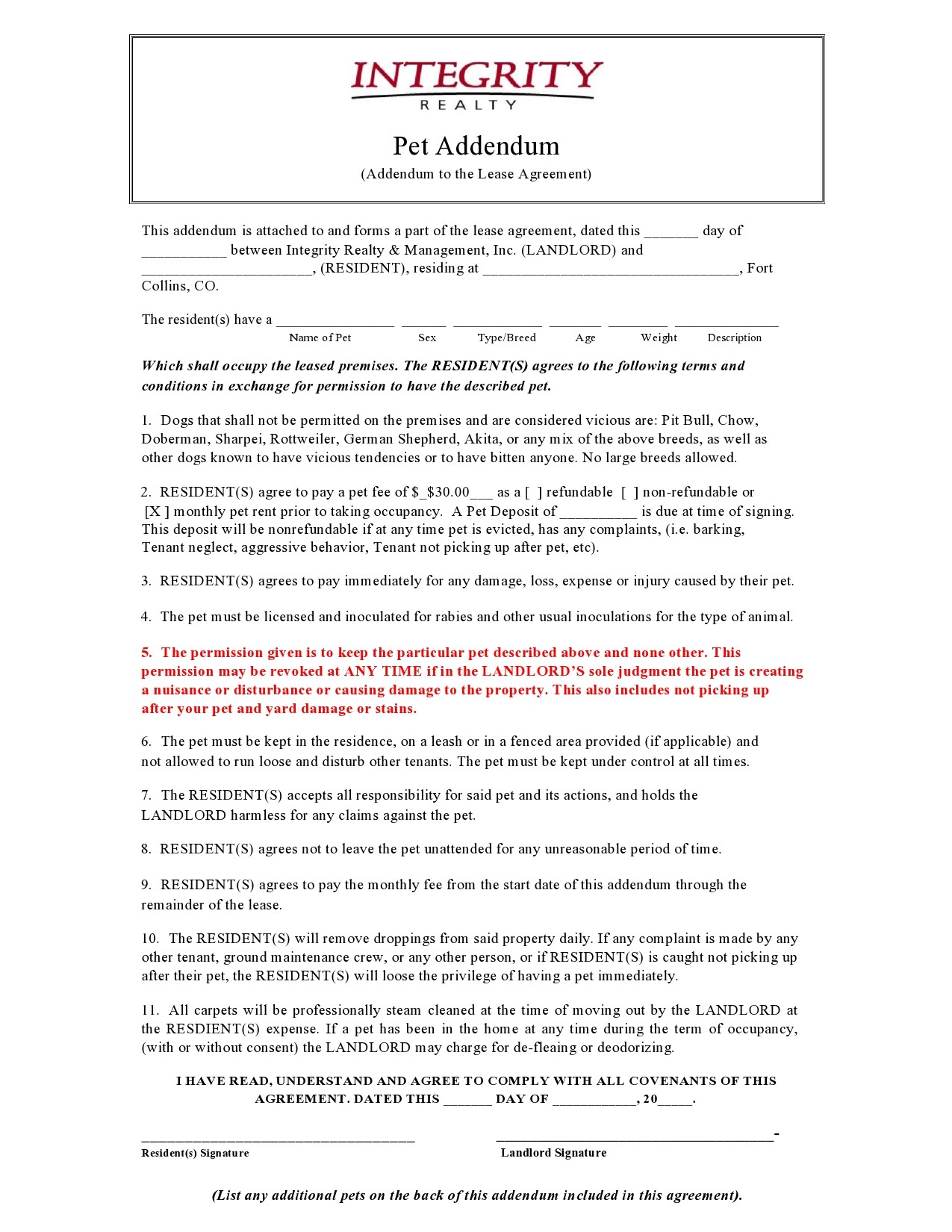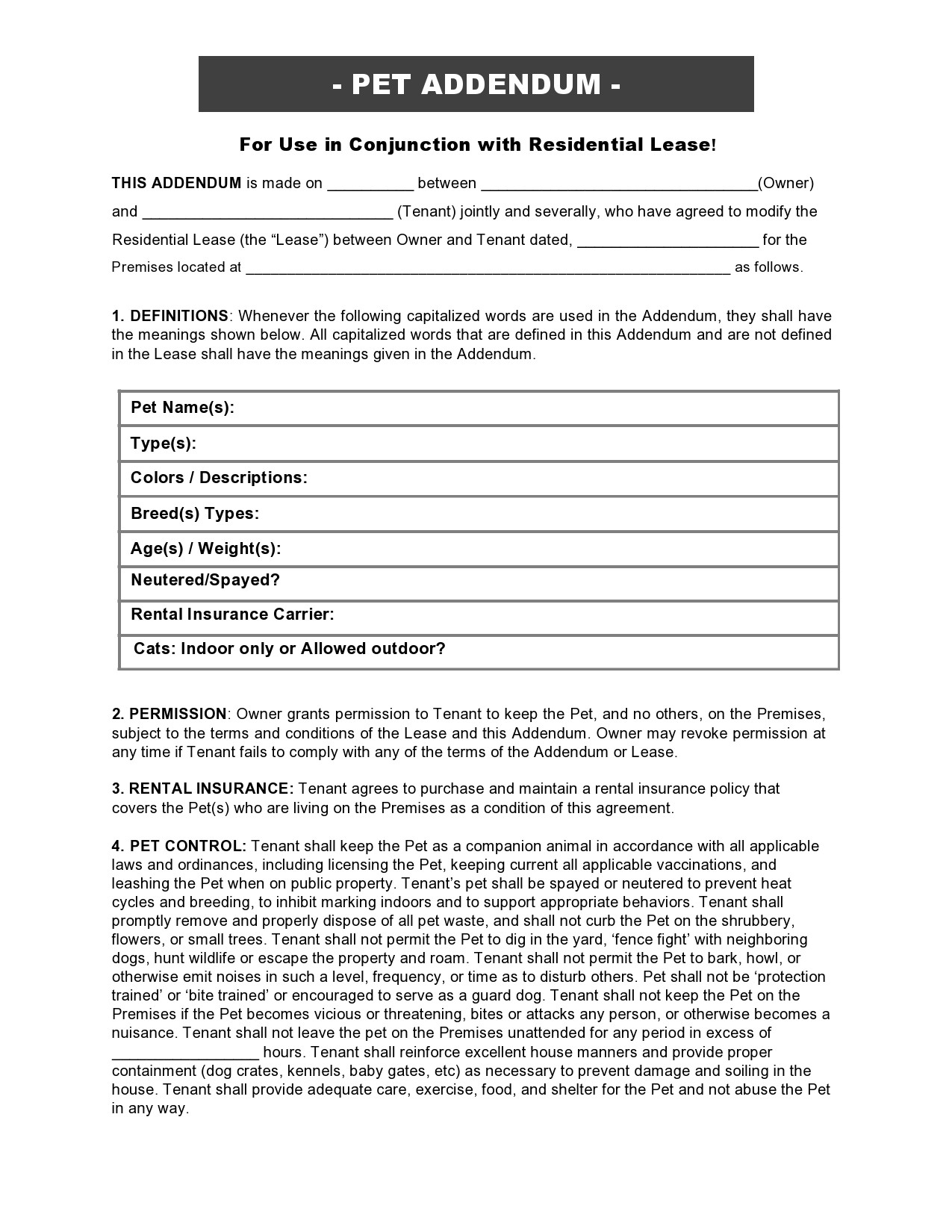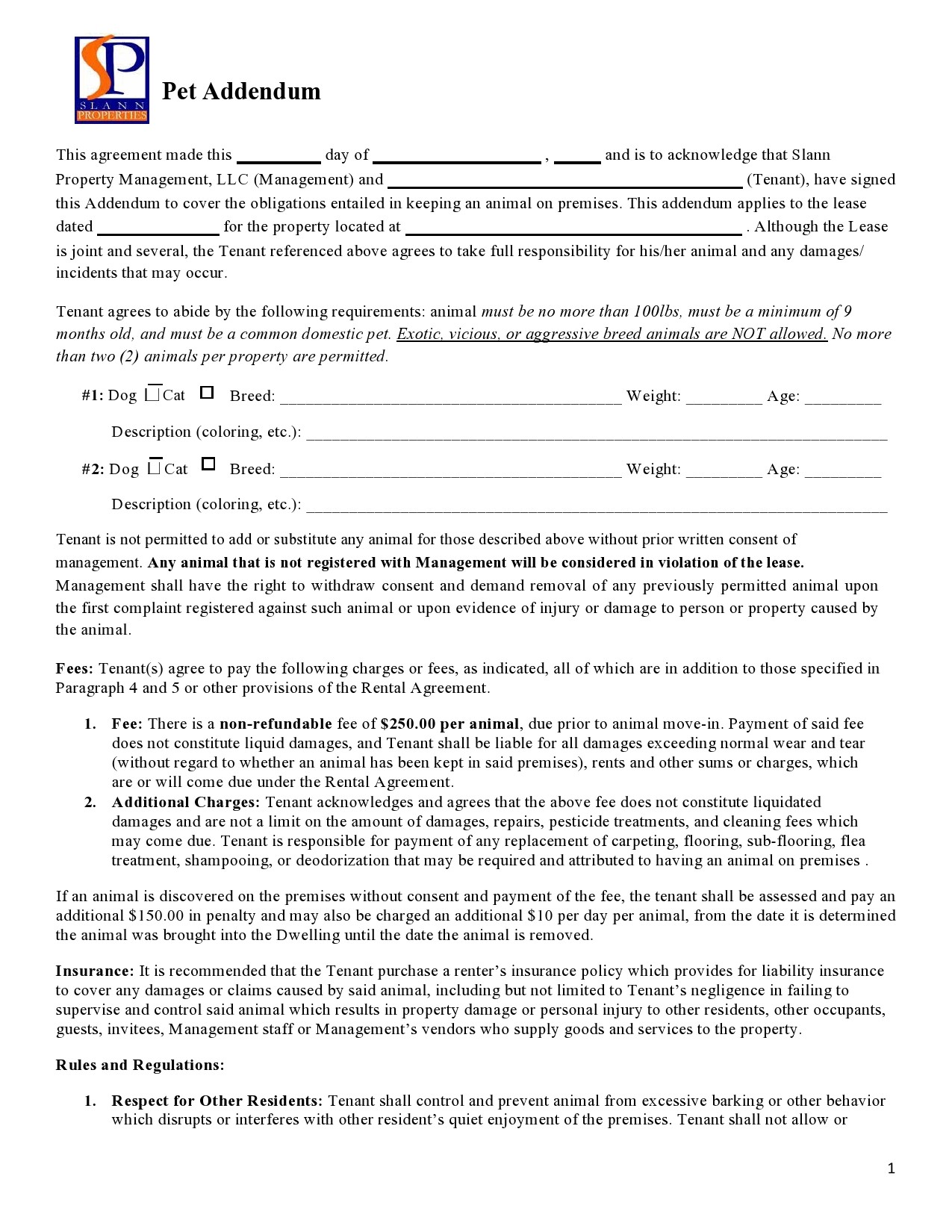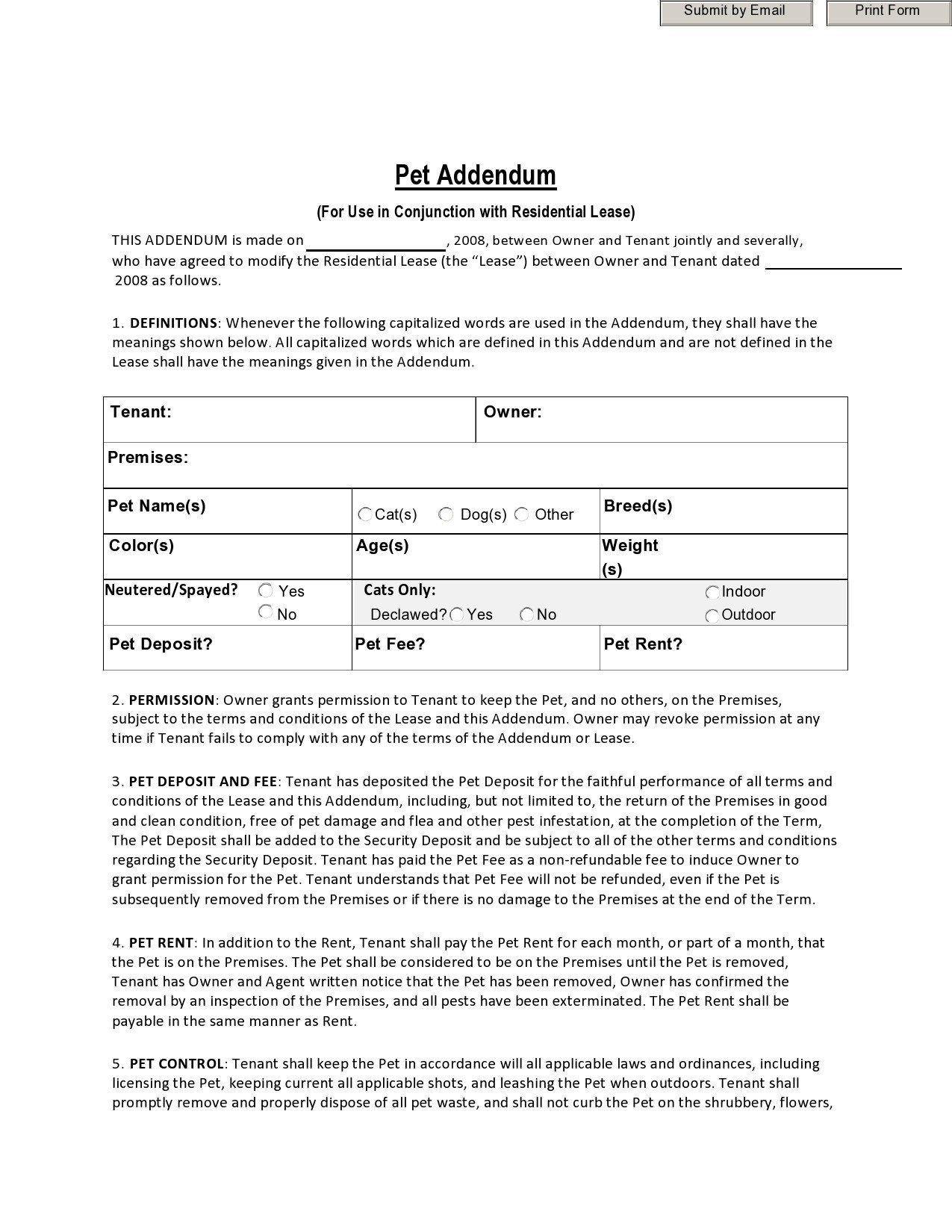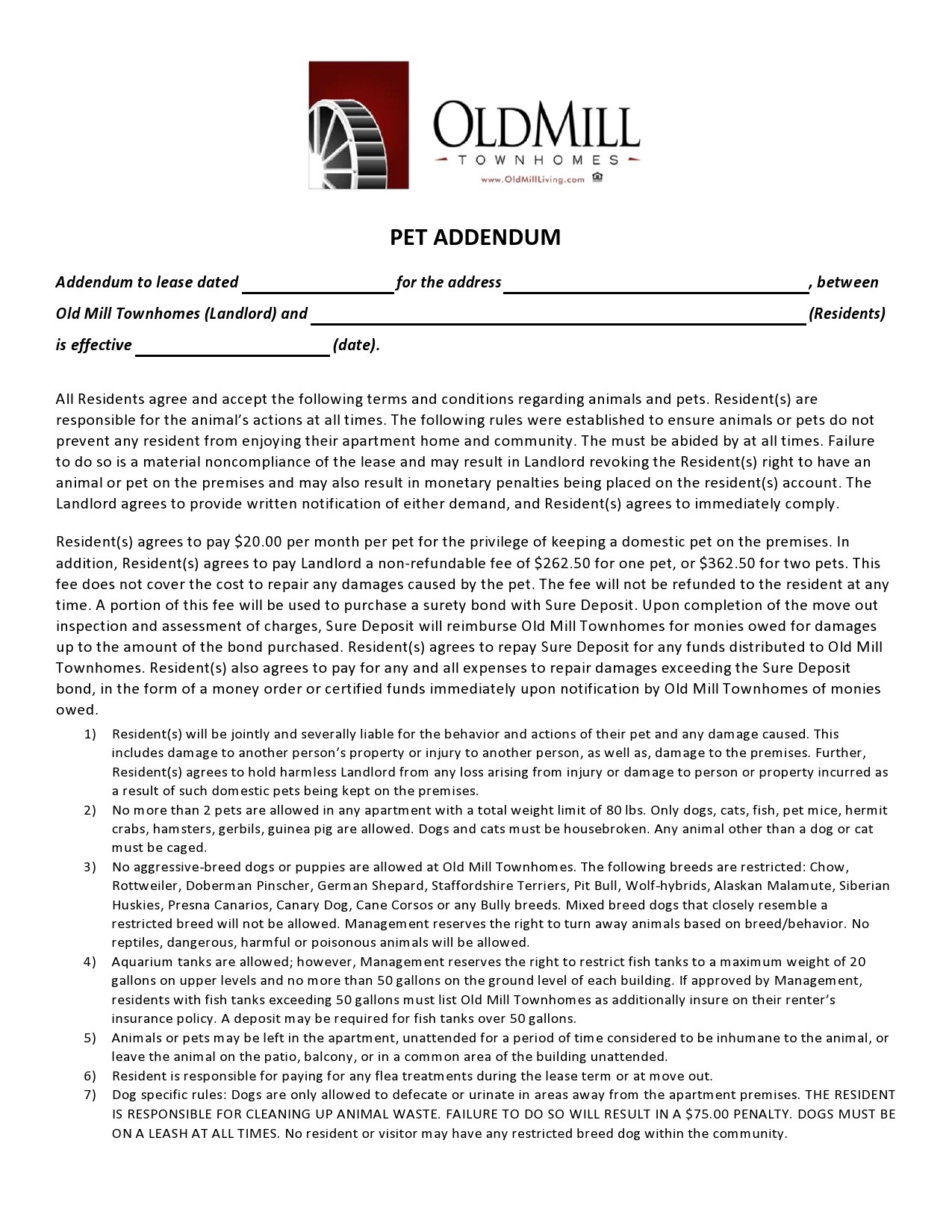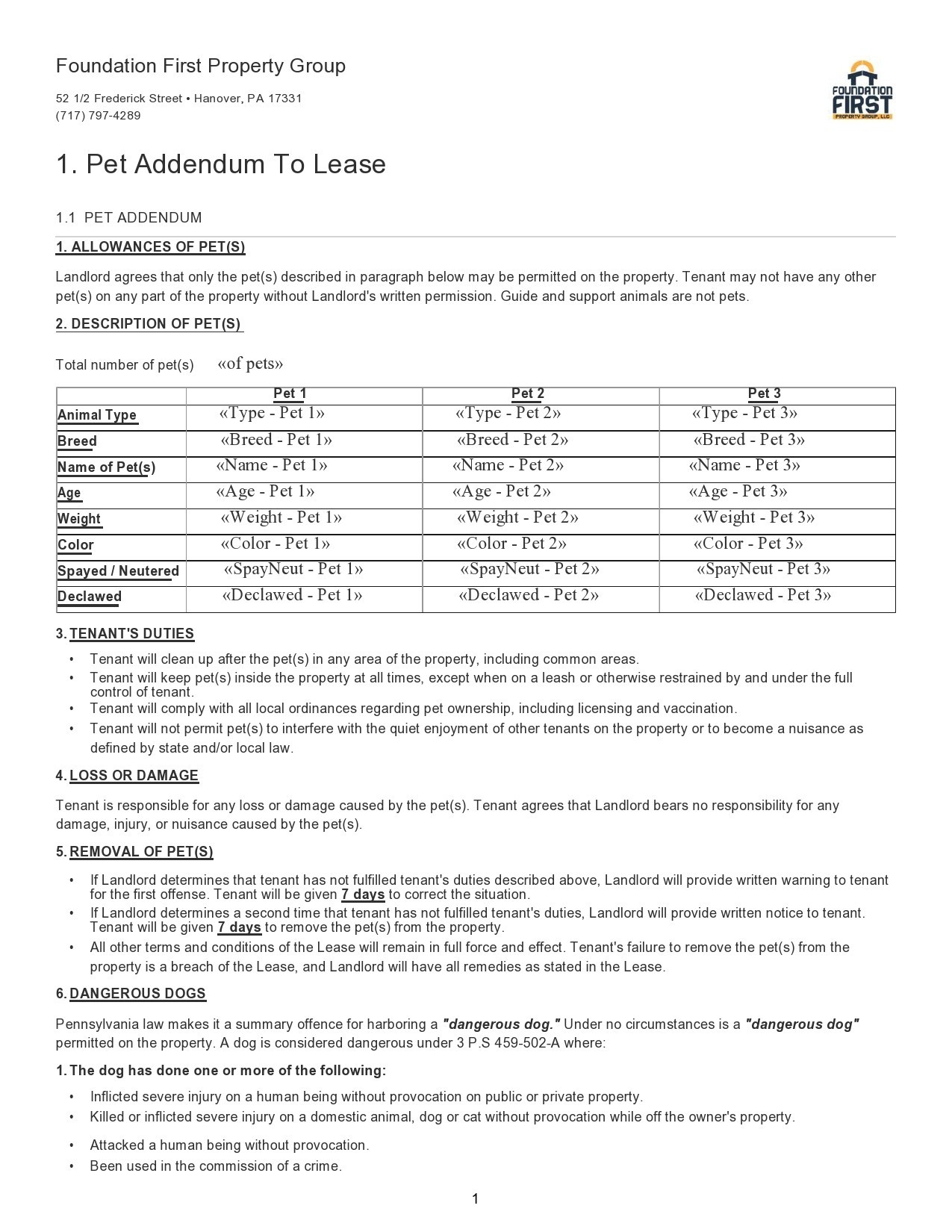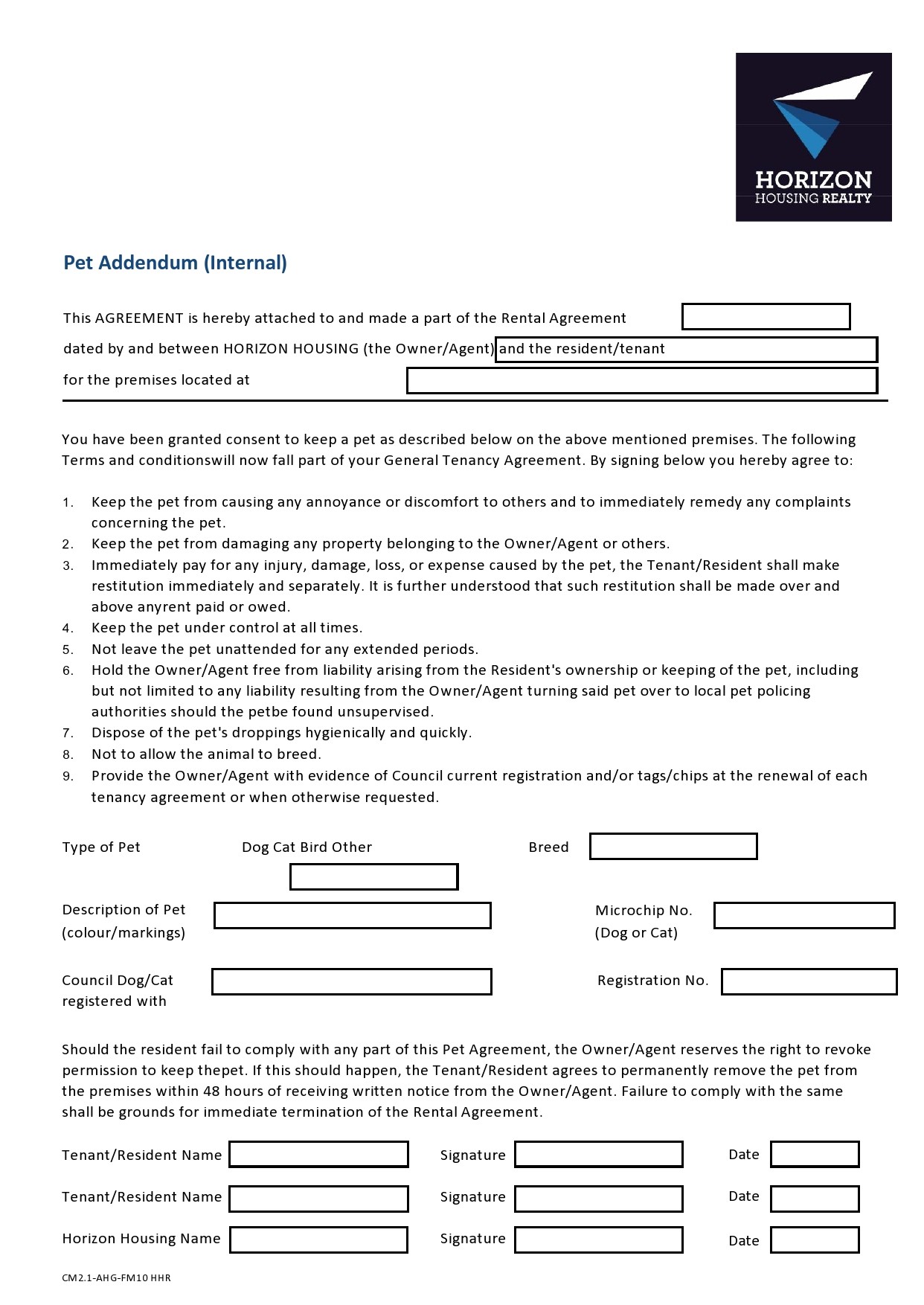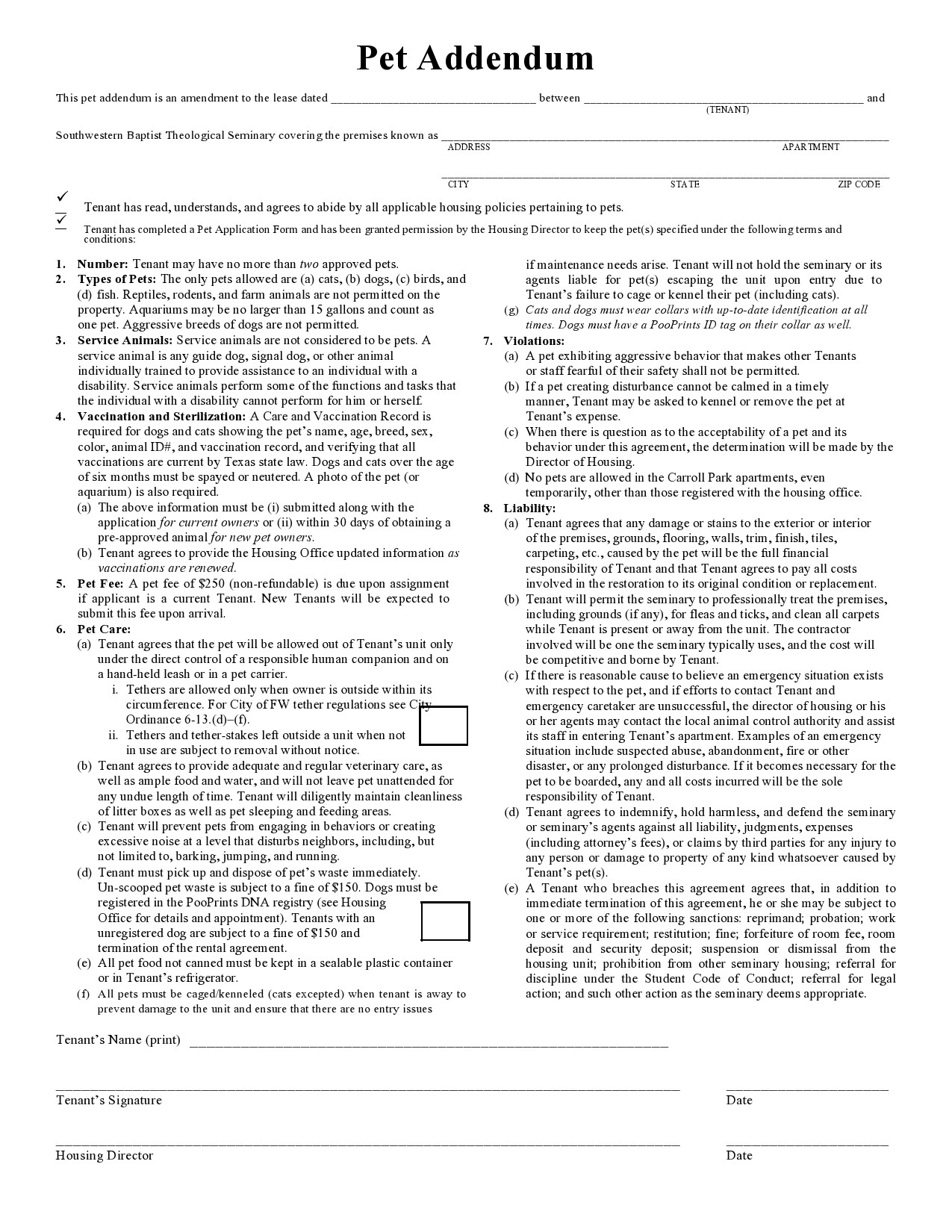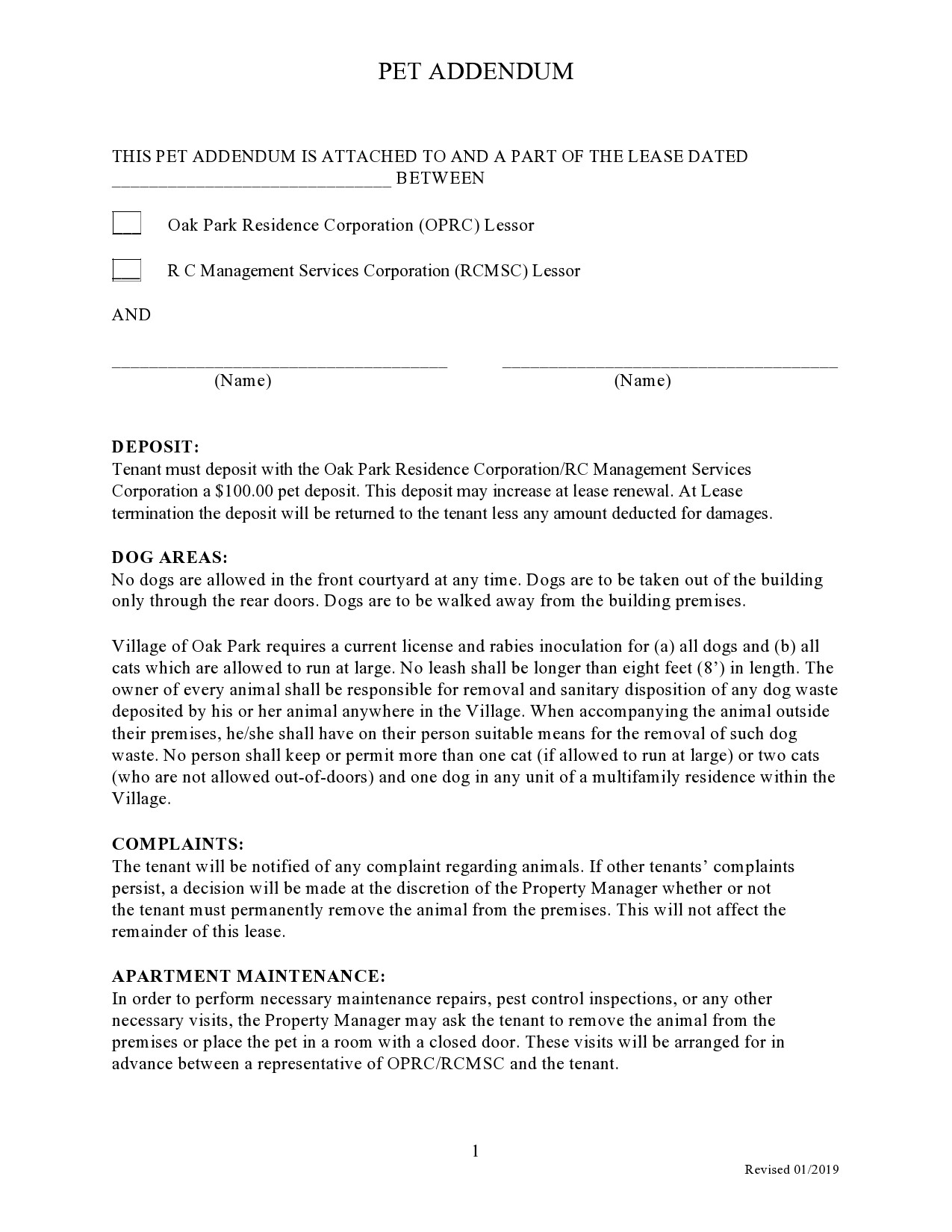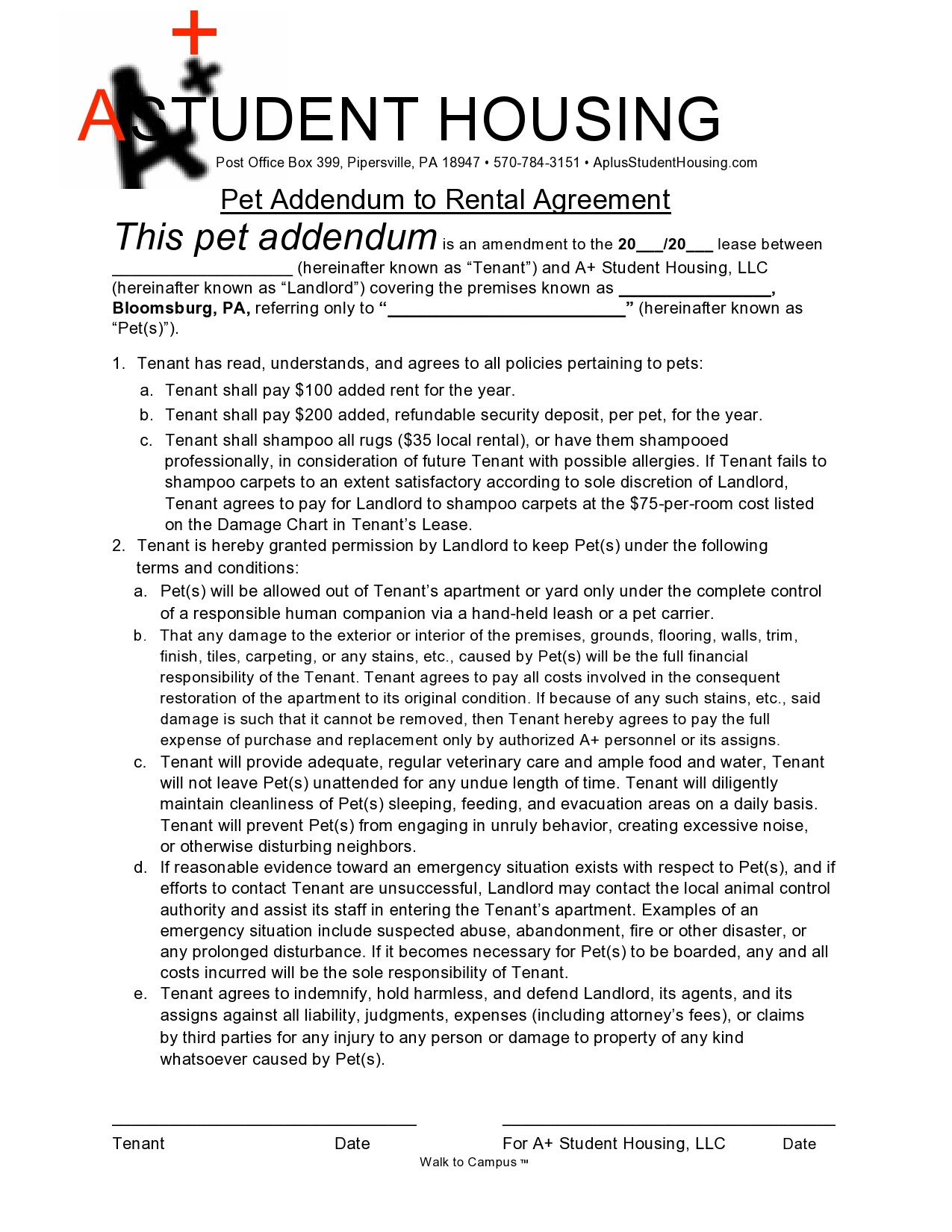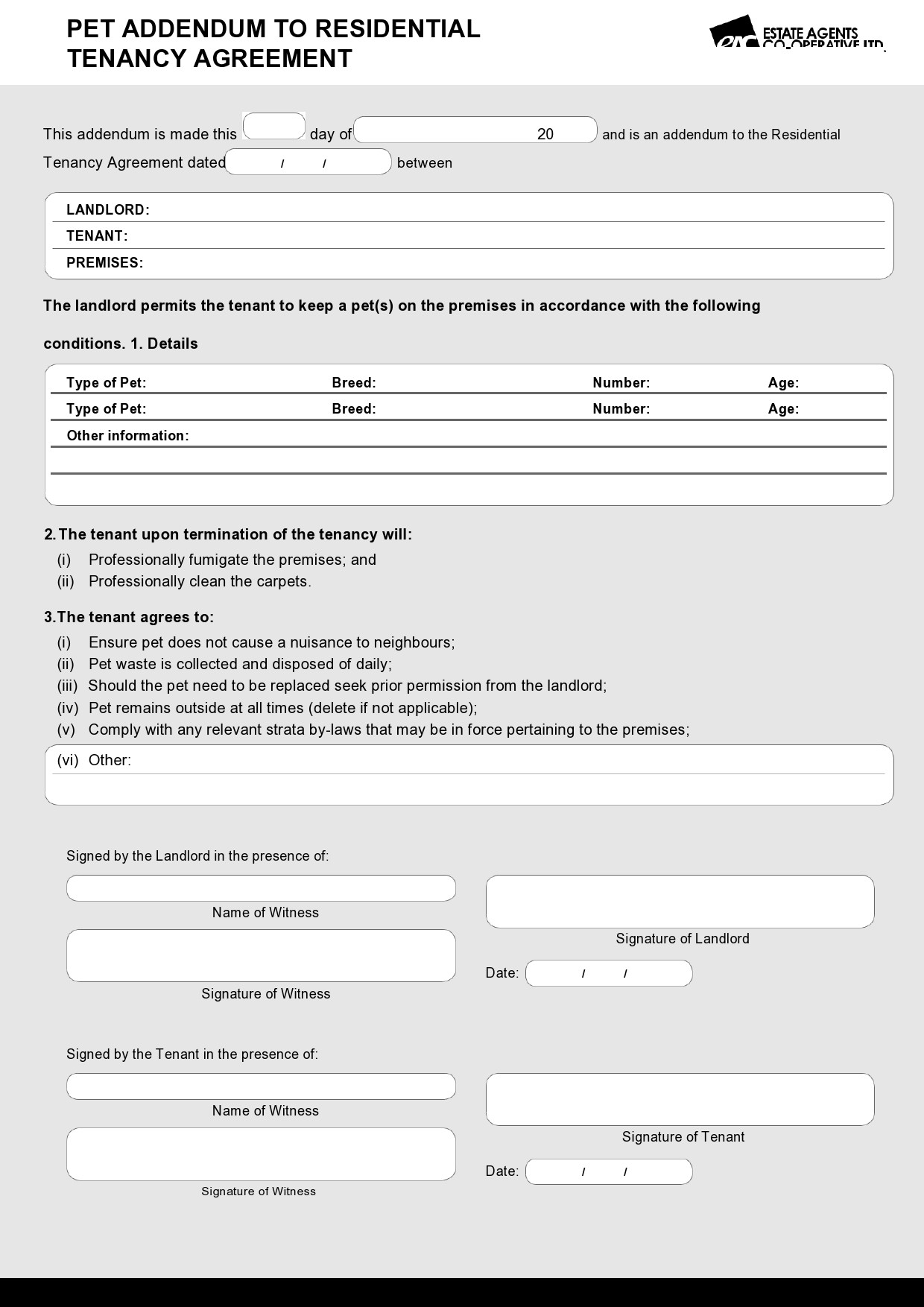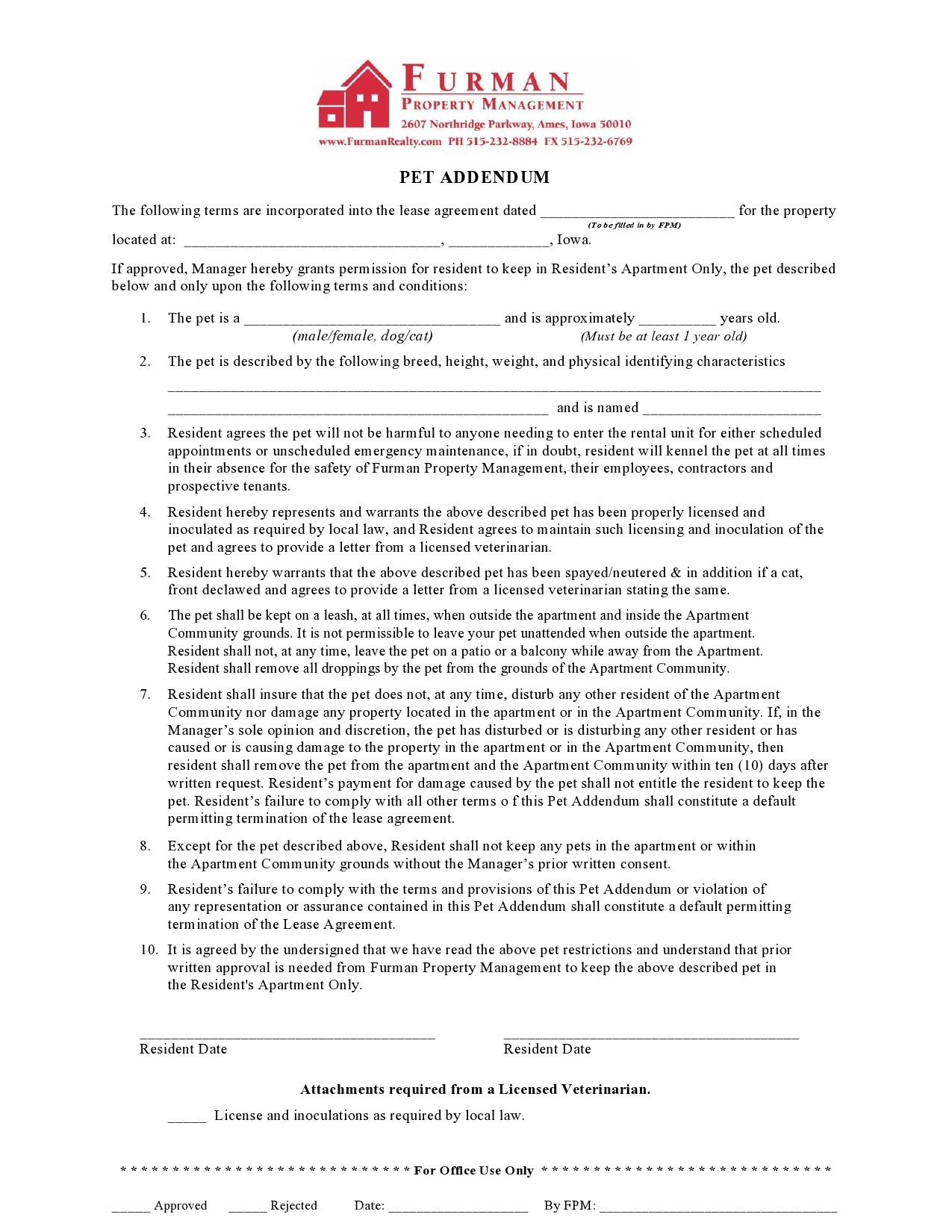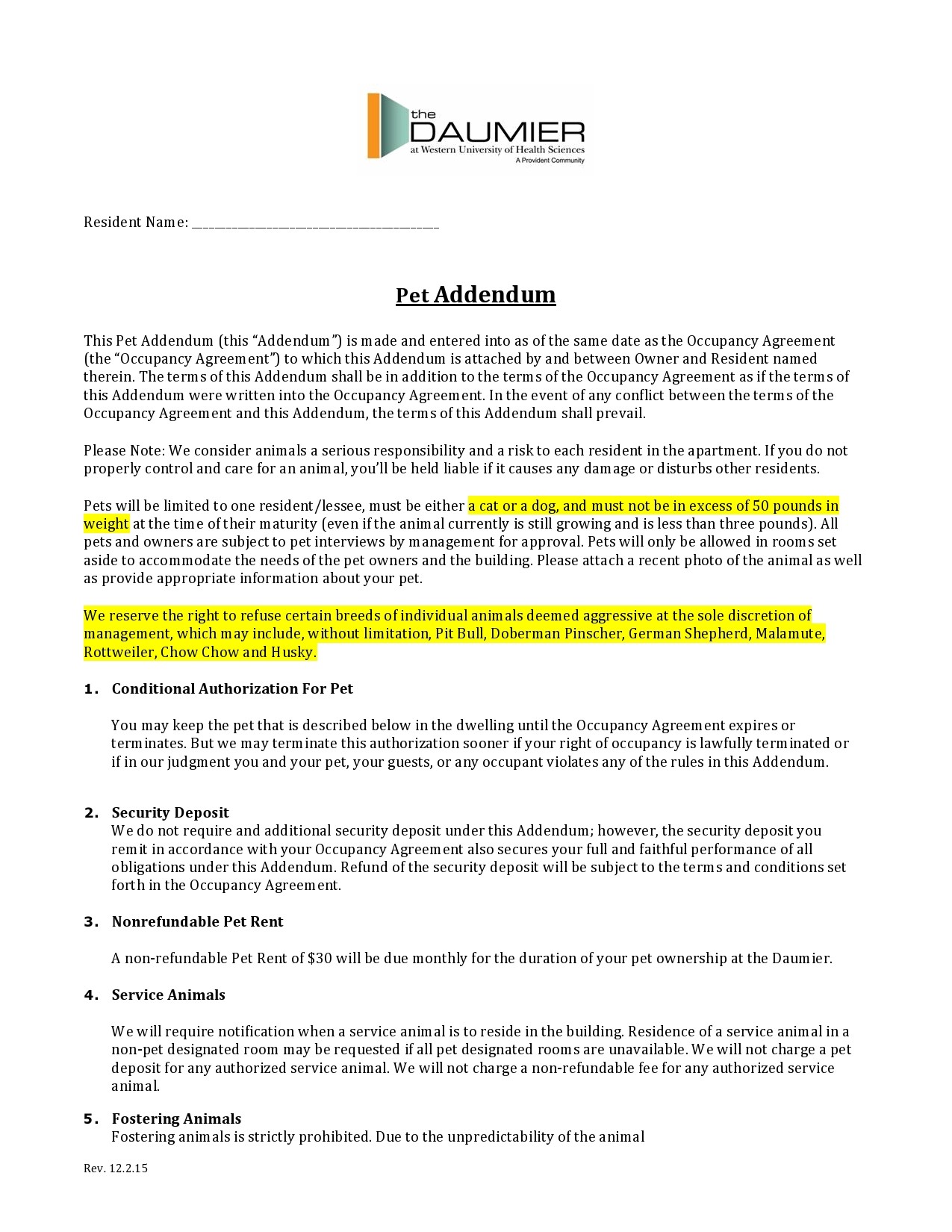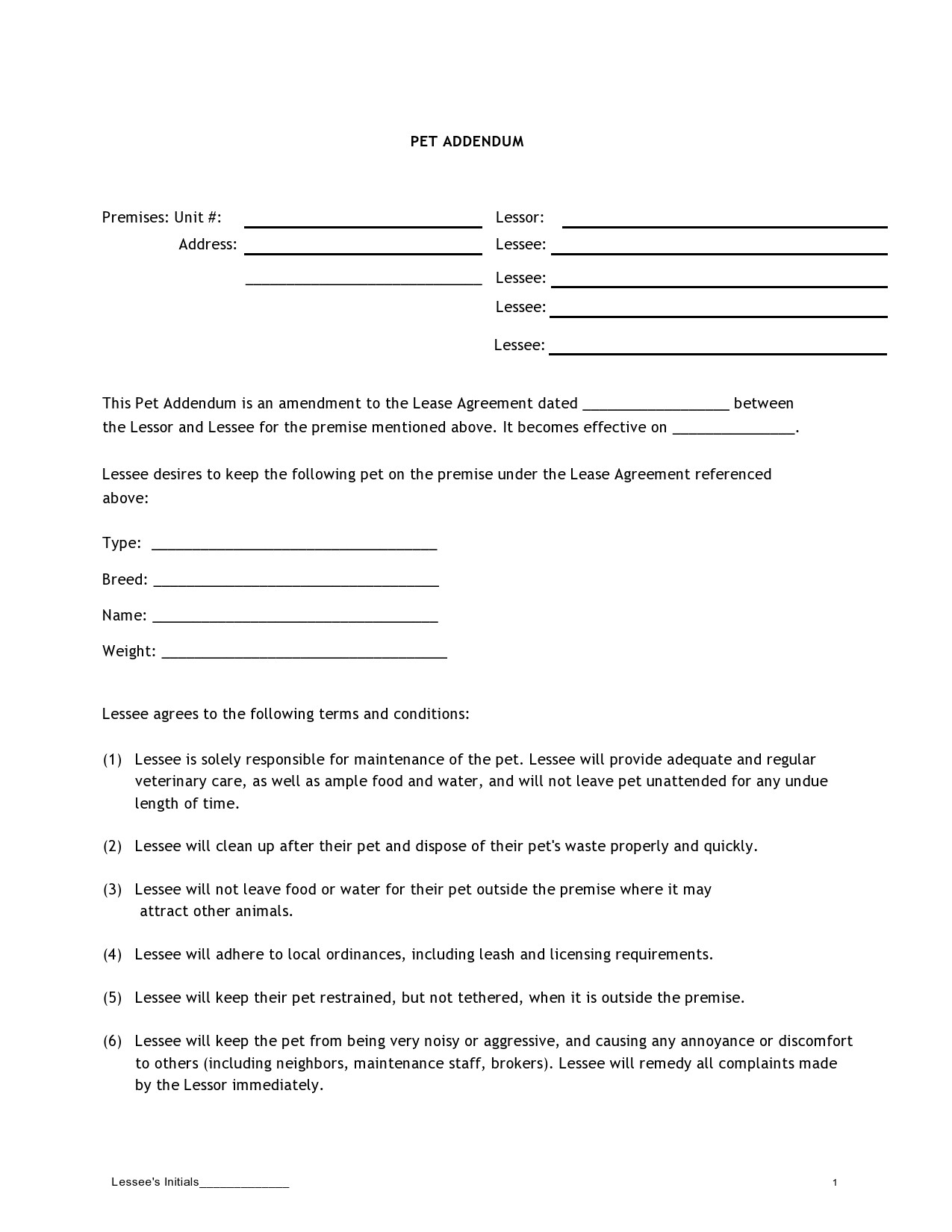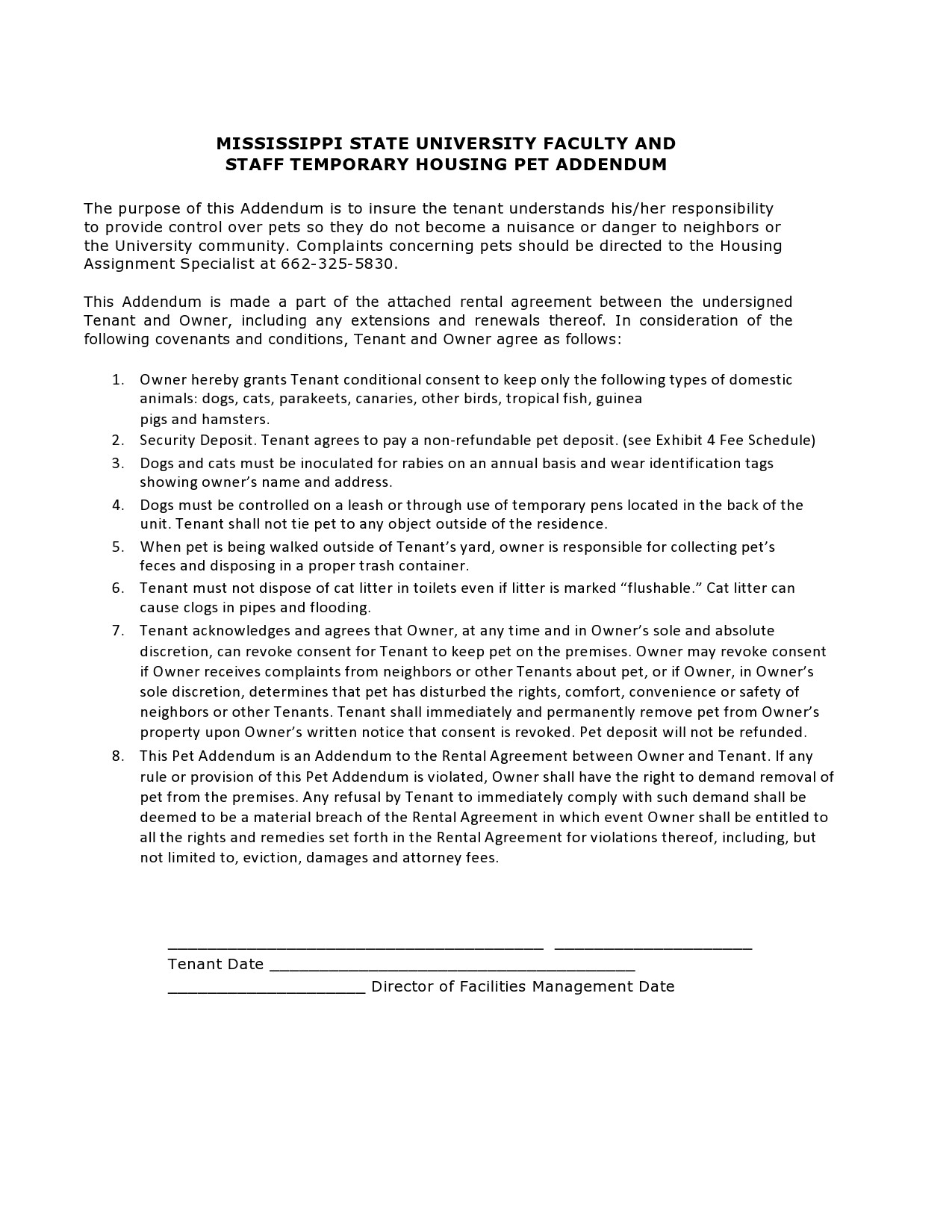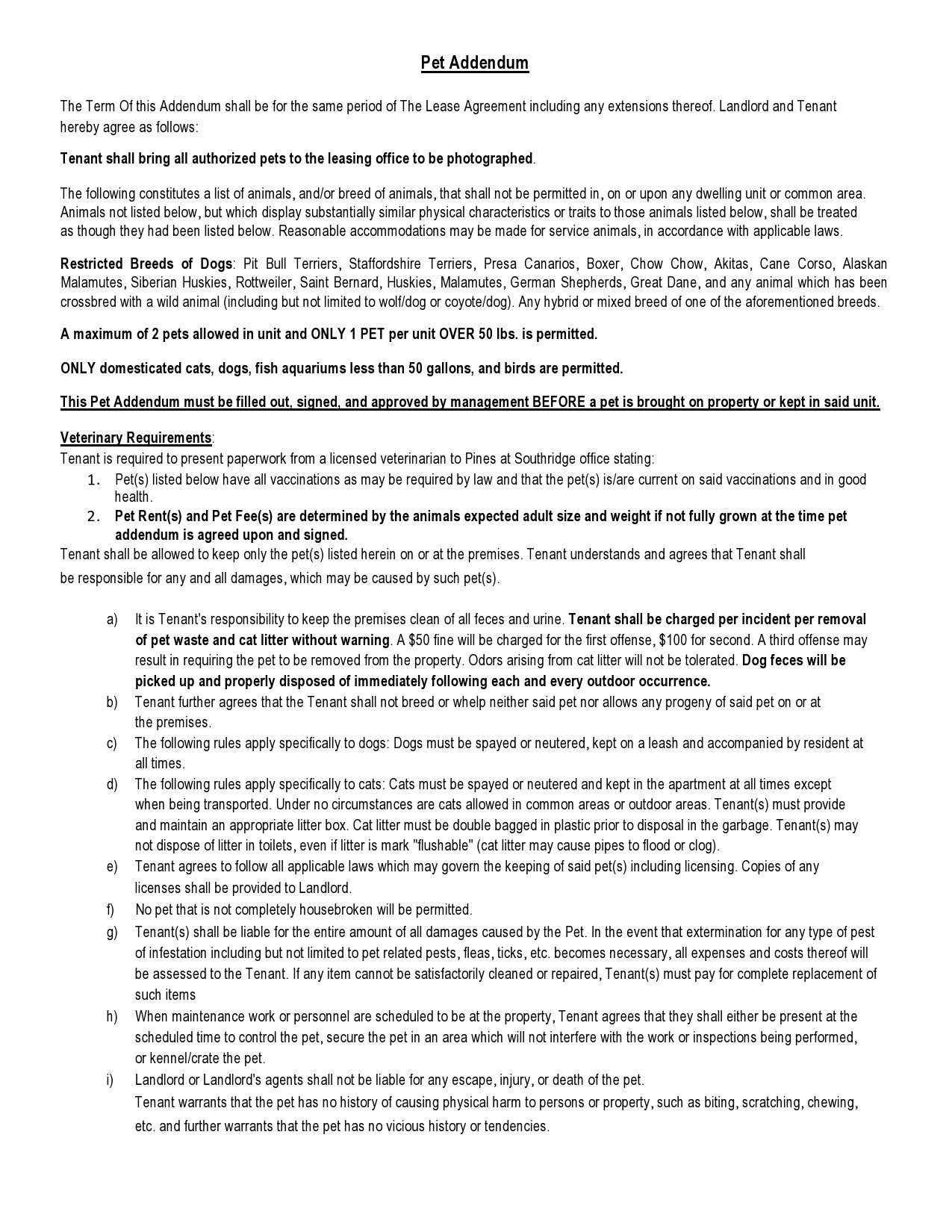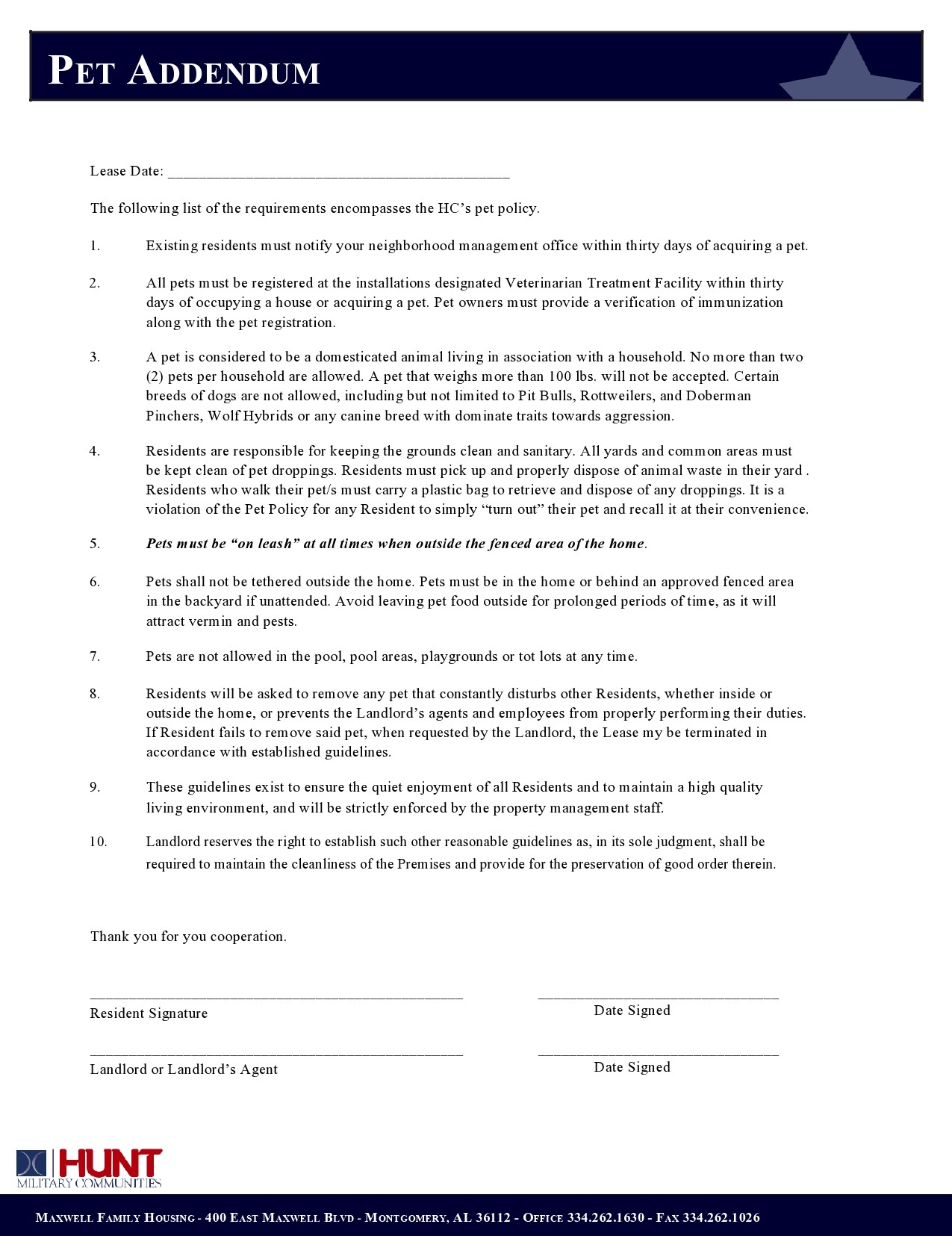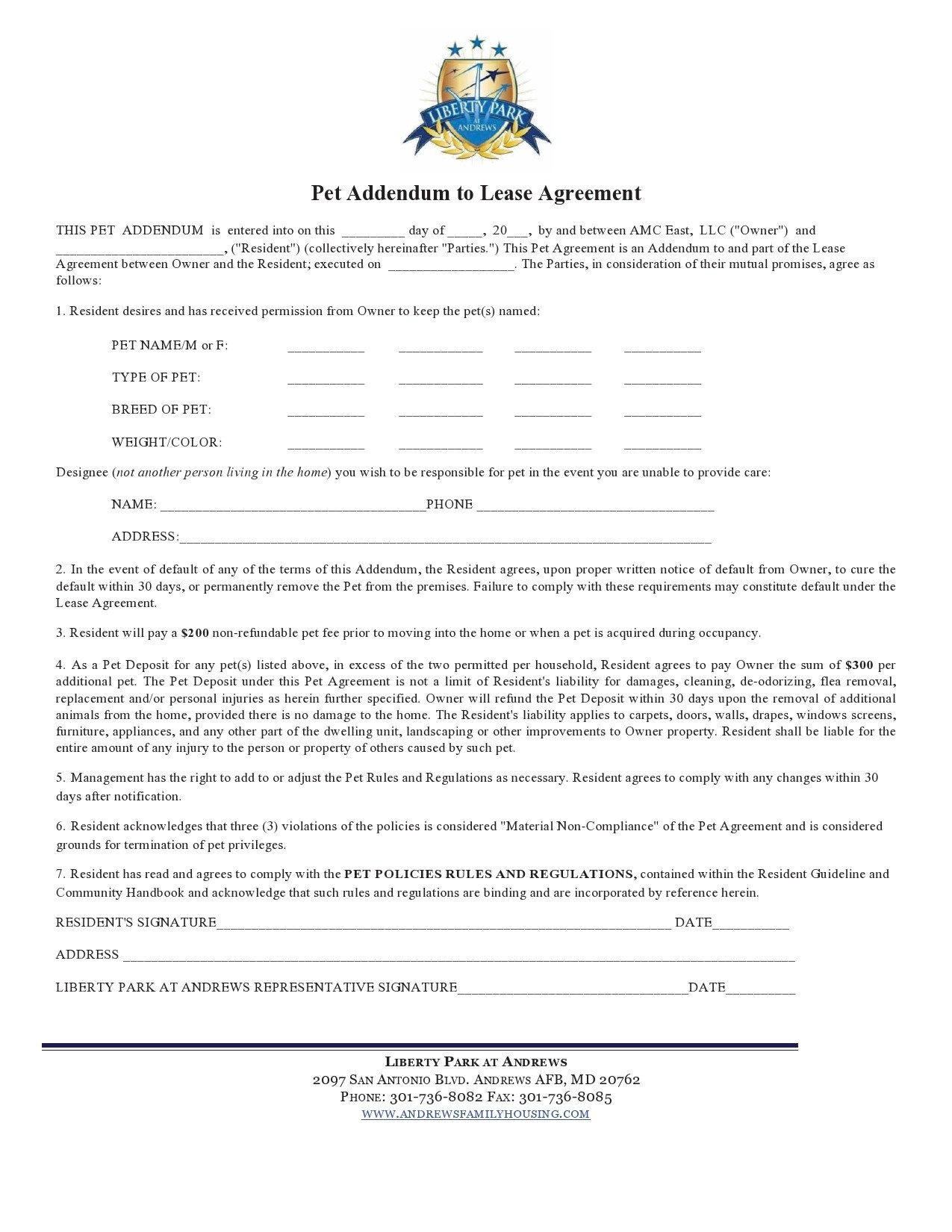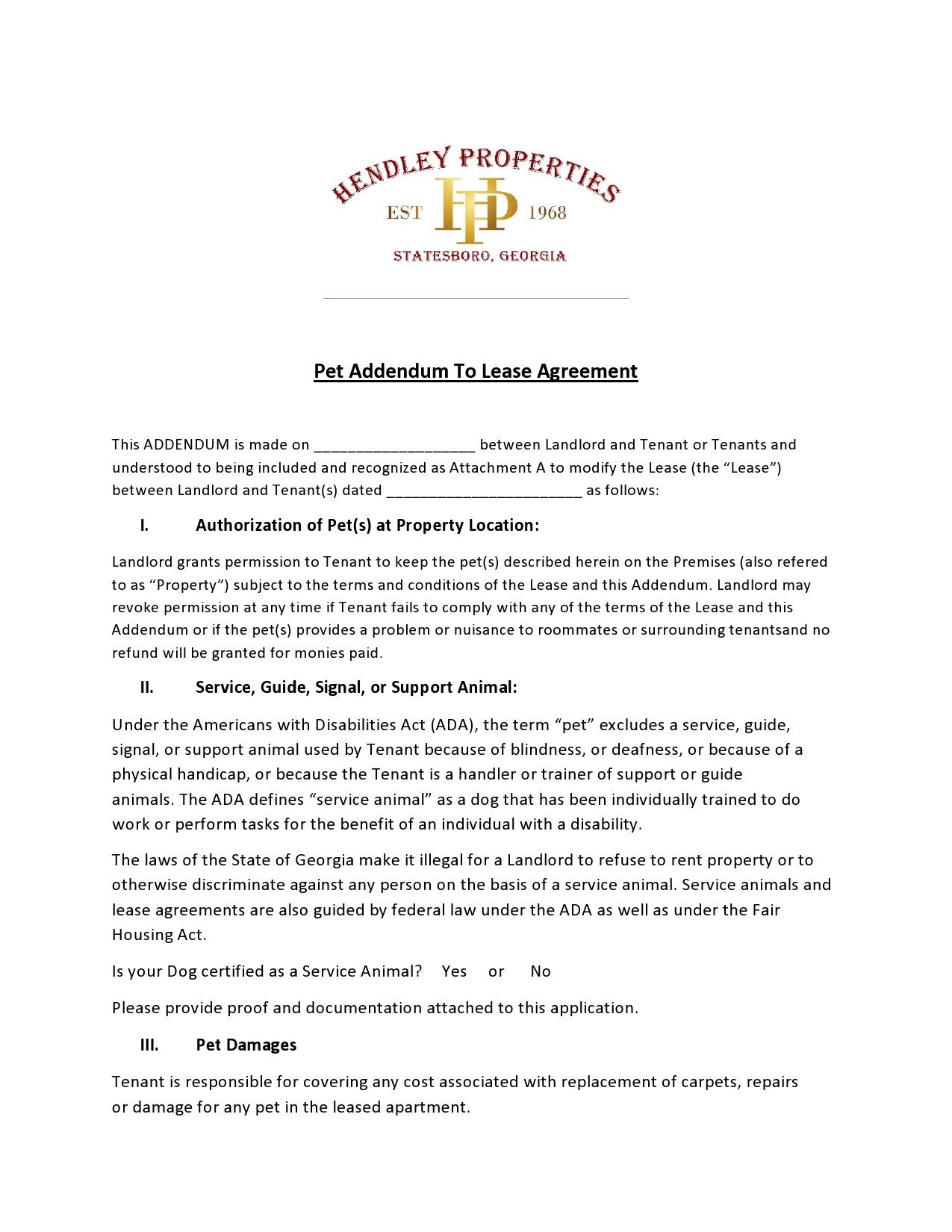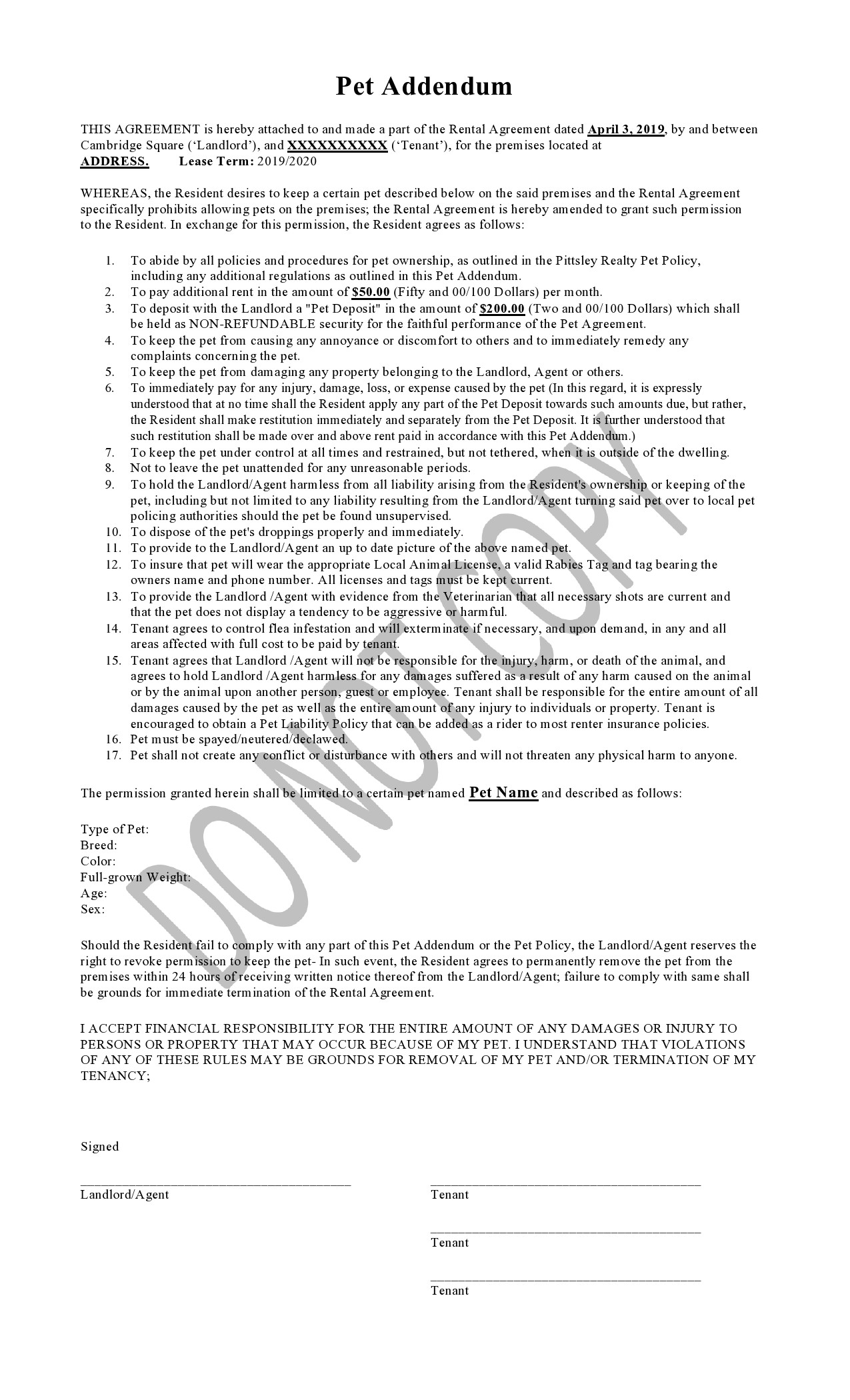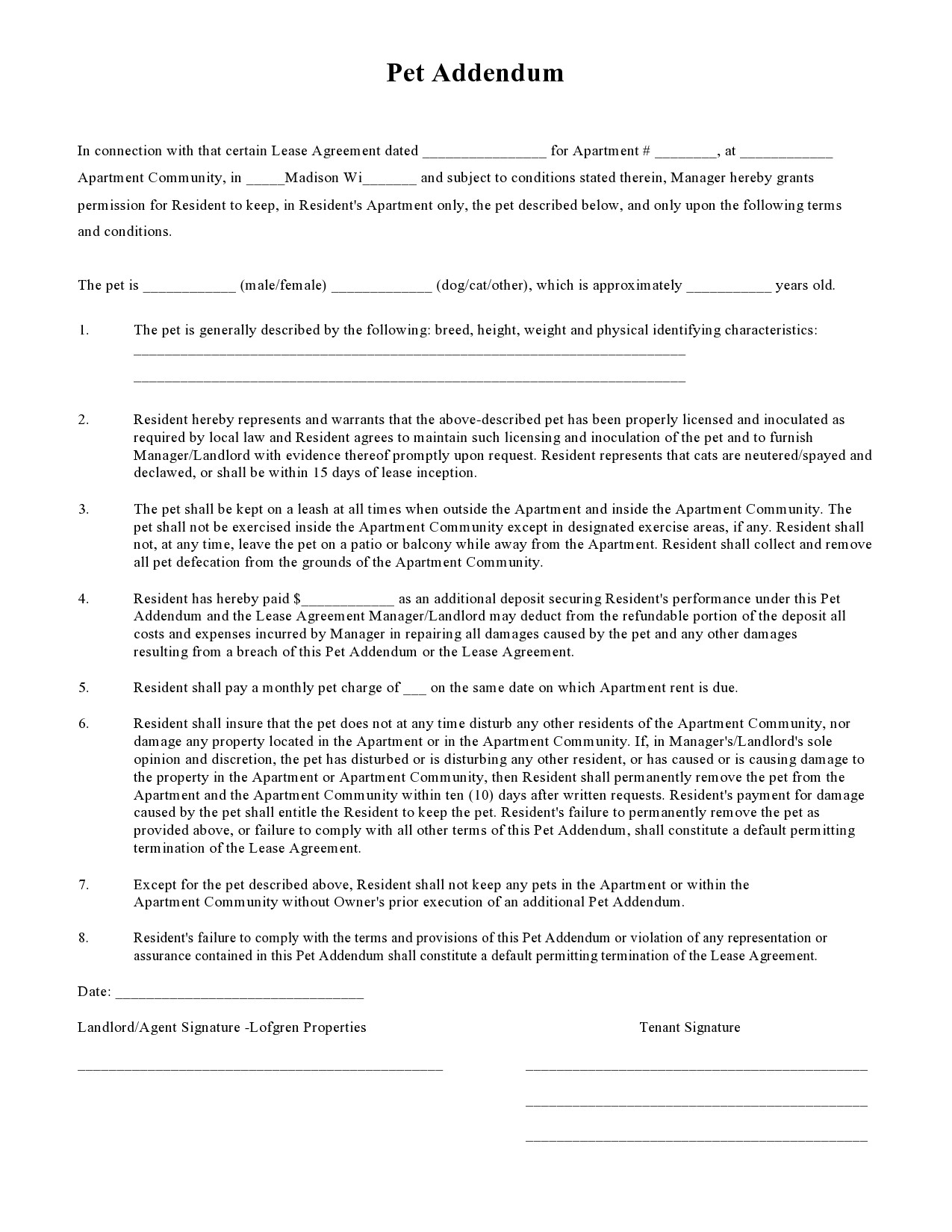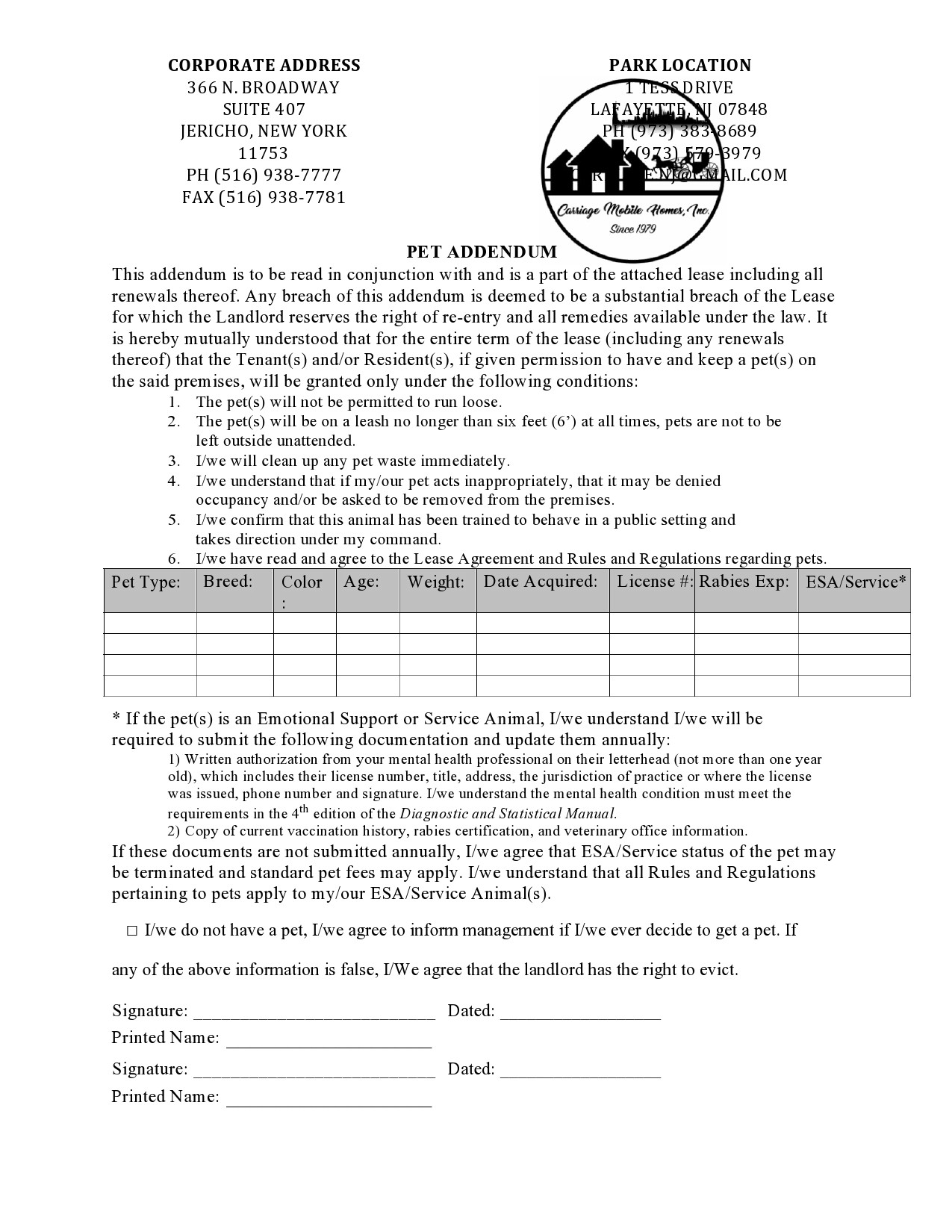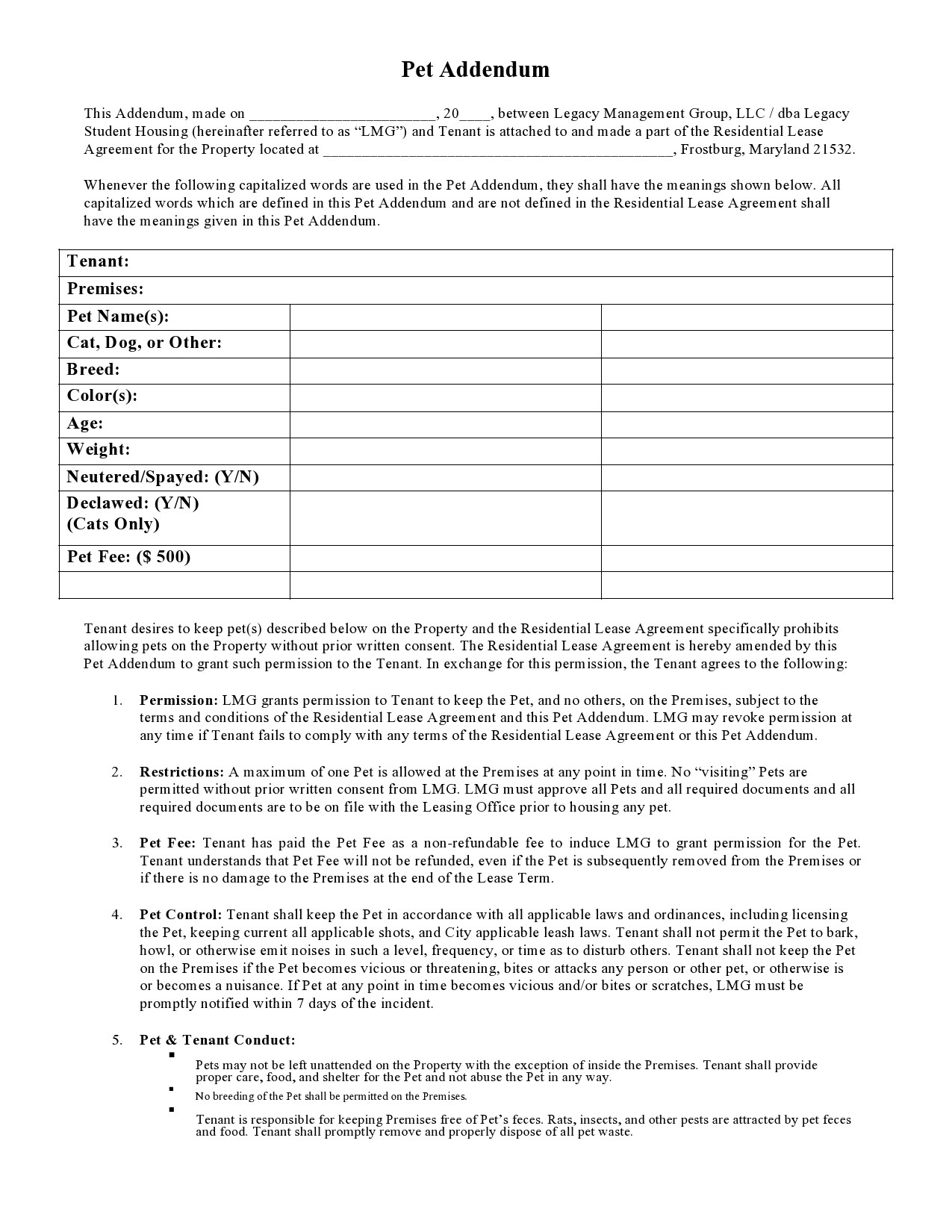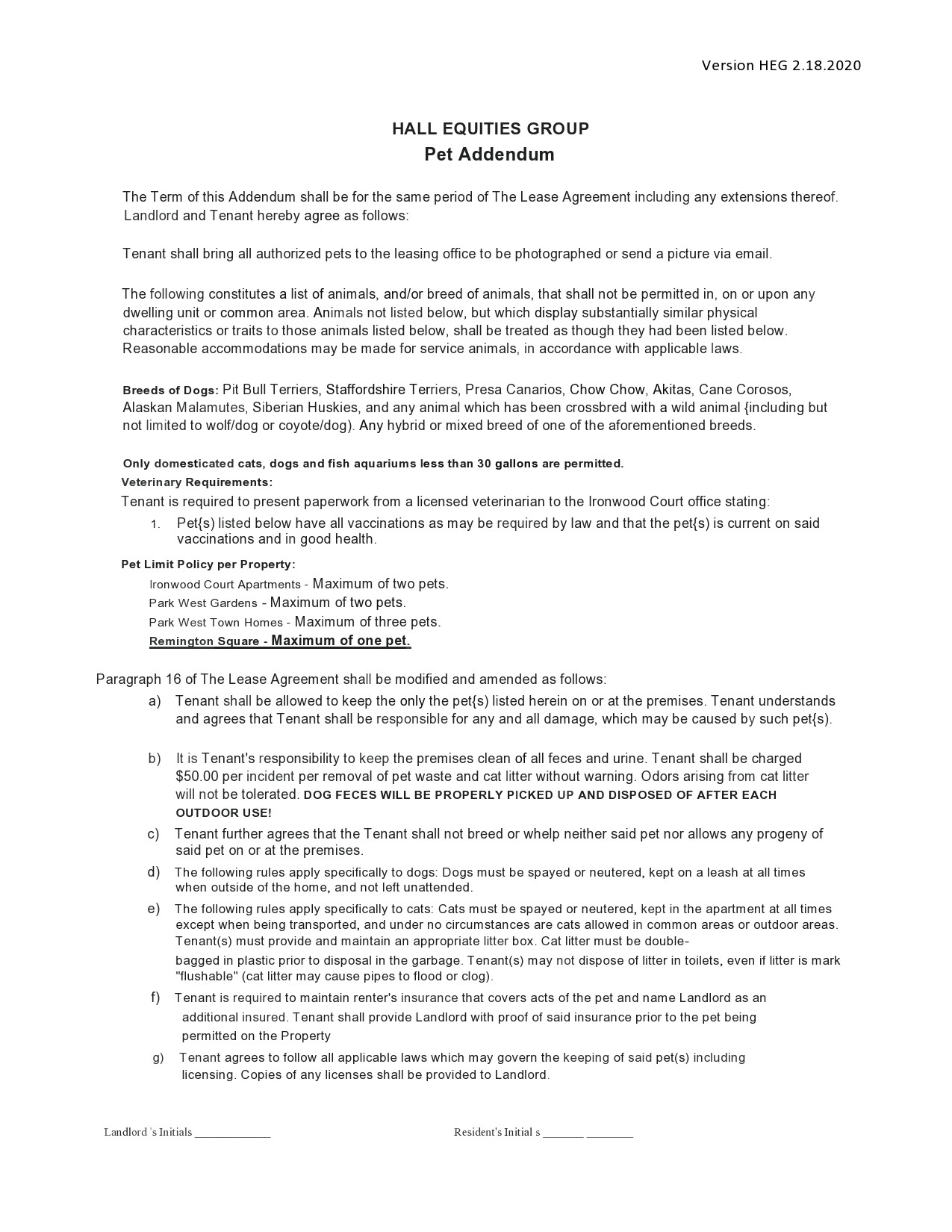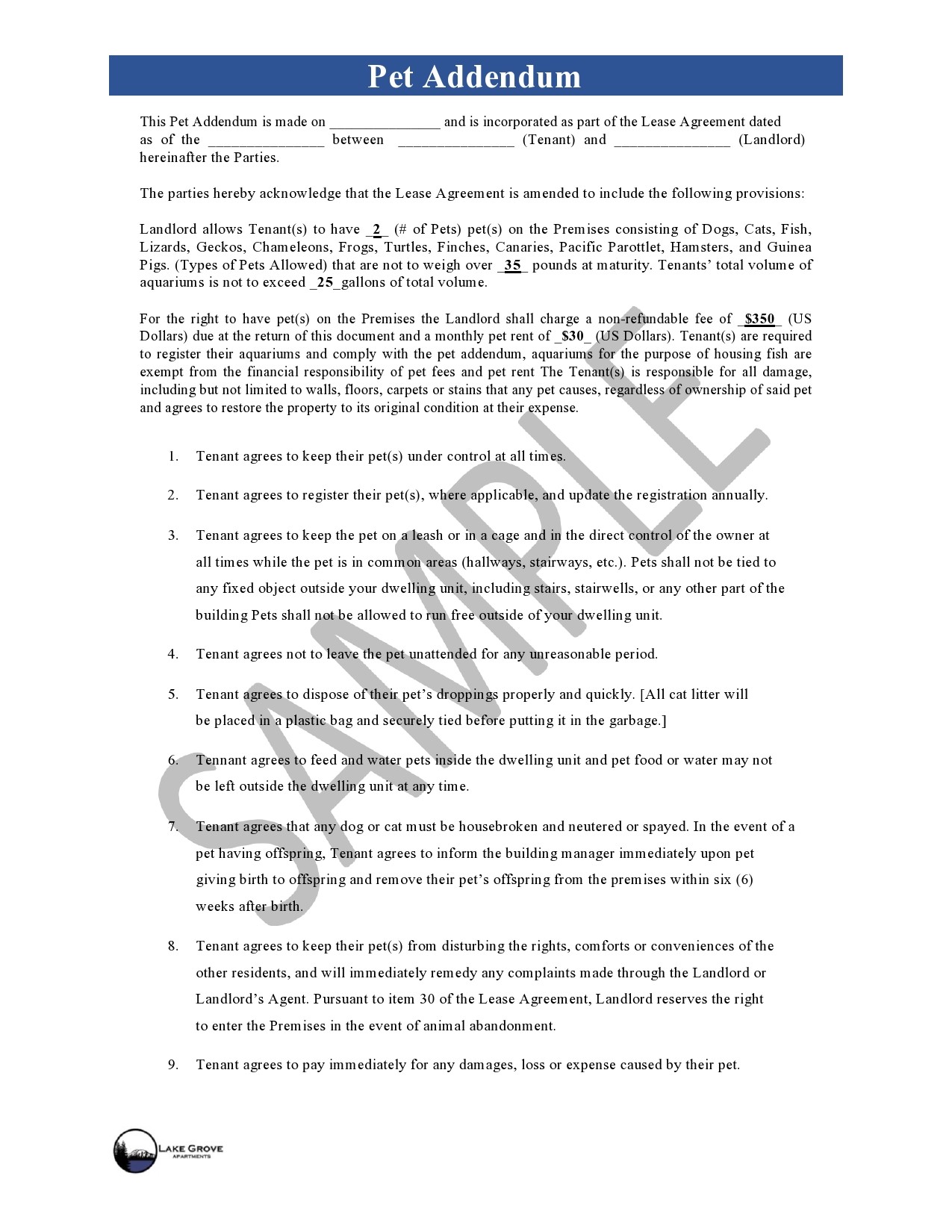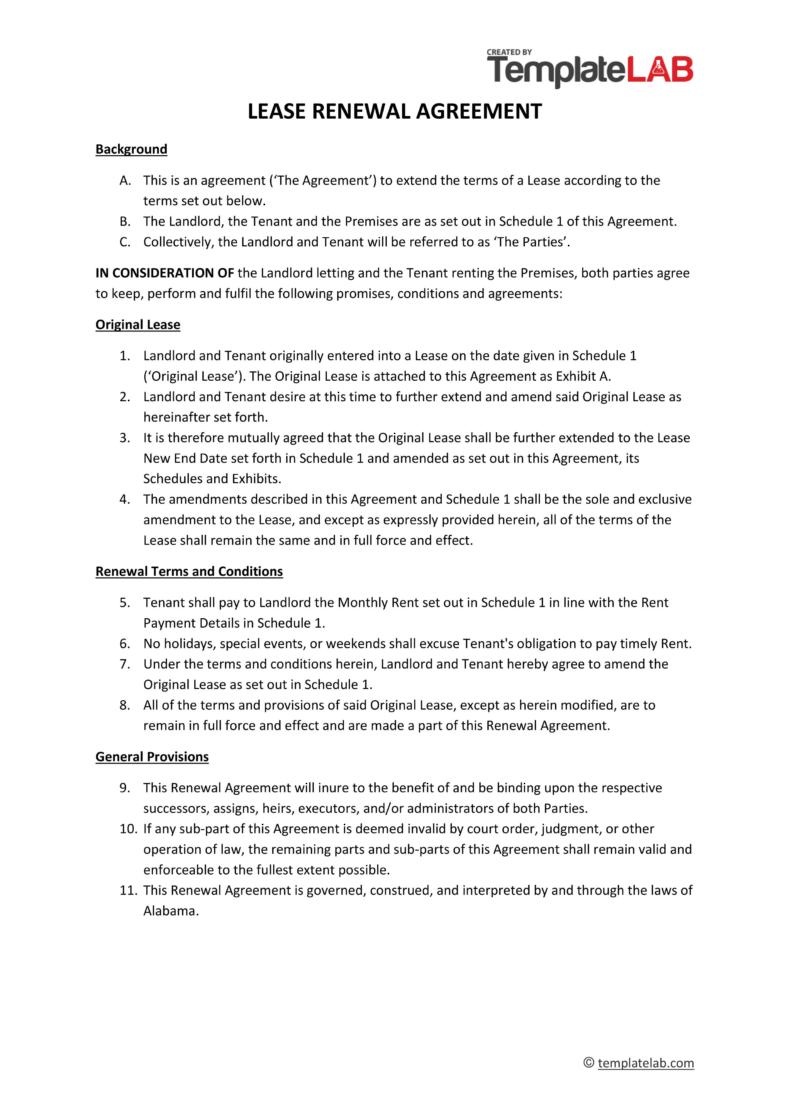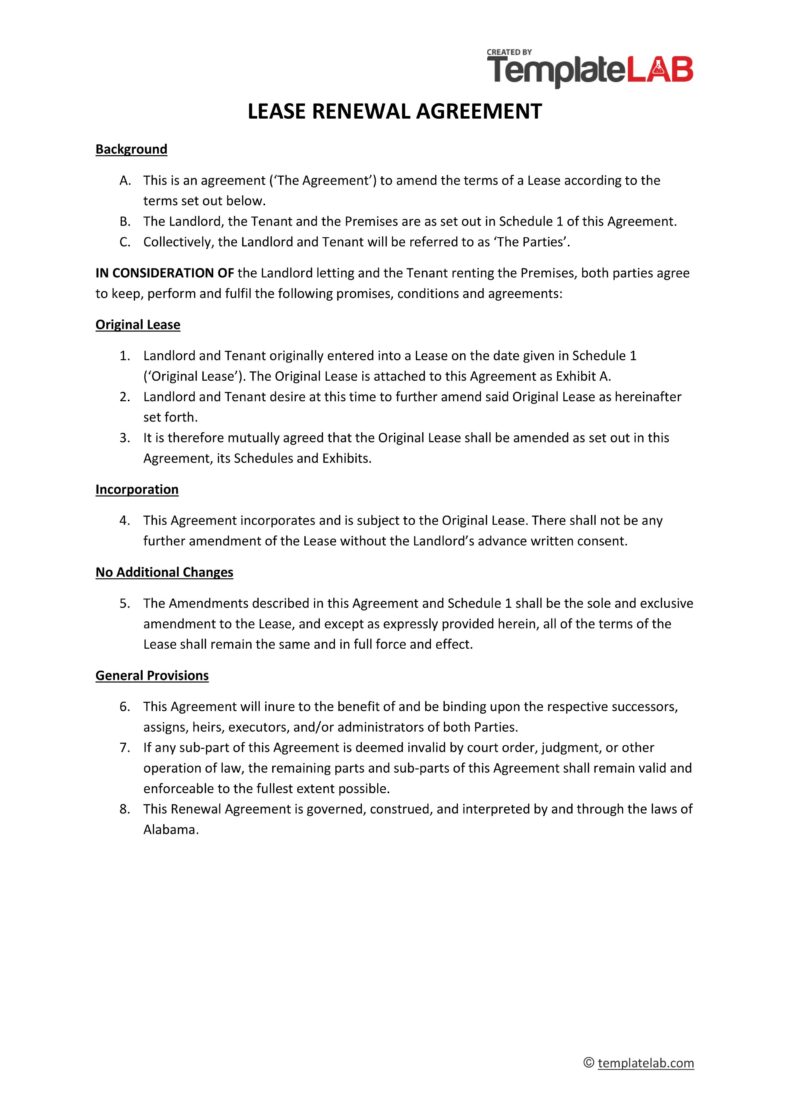Many landlords do not want to have pets on the property. Pets can bring in a lot of noise and bad pet owners mean the pet is not trained on how to behave properly. In some cases, it can cause excessive damage to the property and many headaches that the landlord has not wanted to deal with.
Table of Contents
- 1 Pet Addendum Templates
- 2 What is a Pet Addendum?
- 3 Pet Addendum to Rental Agreement
- 4 Can a Landlord Refuse to Let Me Have a Pet?
- 5 Pet Addendum to Lease
- 6 What Details Should Be Included in the Pet Agreement?
- 7 Pet Agreement Forms
- 8 Why is a Pet Agreement Addendum Needed?
- 9 Are There Benefits to Adding a Pet Addendum to Lease?
- 10 FAQs
However, there may be some situations where a pet addendum can be added to the lease agreement, which would allow the tenant to have a pet live in the apartment. This addendum is added if the original lease said that pets were not allowed within the rental. The landlord can also make exceptions based on the breed, the pet type, and the size. Unless the original lease or a pet addendum is added, the tenant should not bring a pet into their apartment.
Pet Addendum Templates
What is a Pet Addendum?
A pet addendum is going to be a legal document that comes separate from the original lease the tenant and landlord signed. It will detail the exceptions and any necessary rules around allowing pets on or in the rental property. The agreement is binding and legal once the tenant and the landlord sign it.
Many times the landlord does not want pets inside of the rental unit. They can cause a mess and more damage than they are worth. But there are situations where the landlord will allow an individual tenant to have a pet, such as one who needs a service dog or who has lived on the property for a number of years and has proven themselves a reliable renter.
The pet addendum allows for the landlord to do this, without changing the whole lease or allowing every tenant on the property to have an animal. They may also list out a few other requirements for the pet addendum, including:
- The types of pets allowed.
- The size or weight of the pet allowed
- The fees or deposits required for the pests
- Who holds responsibility for the damages to the pet.
The landlord also reserves the right to take the pet addendum away if the tenant abuses it. The pet needs to be properly trained and not disturb the other tenant. They must also treat the property with respect while they are there.
Pet Addendum to Rental Agreement
Can a Landlord Refuse to Let Me Have a Pet?
Landlords do have the right to have a “no pet’ clause within their lease agreement as they are the owner of the property. They are allowed to deny all kinds of pets for any reason, though cats and dogs are the ones who are prohibited.
Many landlords will be fine with a smaller pet, like a fish tank, as long as the tank is well-taken care of and there isn’t a big mess. Dogs and cats, as well as dangerous animals, are often excluded from the lease as well.
A landlord may choose to change their mind about allowing a pet into the rental unit. They may do this for all tenants or give special permission to one tenant at a time. This is most likely to happen with cats and dogs, and often in the case that the tenant will need a service animal. If the pet bites others, causes excessive damage, makes excessive noise, or causes other major problems, the landlord can revoke that pet addendum and not allow any pet in again.
There are some exceptions to the no-pet rule that were set out by the Fair Housing Act. Tenants who struggle with physical or emotional disabilities and need to live with a service animal, most commonly a guide dog, are allowed to bring the pet into the property. The landlord may not be able to withhold deposits for damage to these pets, but they should check the local and state laws first.
The landlord will enjoy using the pet addendum because it still gives them some legal protection, even if the tenant has a guide dog with them. These include:
- The landlord is not liable if the pet harms another person on the property.
- The landlord can decide the pet can’t stay if there is a violation of the addendum.
- Still gives the landlord the right to enforce the original agreement.
Pet Addendum to Lease
What Details Should Be Included in the Pet Agreement?
The landlord will be able to write up the pet addendum for both parties to sign and add to the original lease. Each addendum will be different based on what the landlord will allow and the situation at hand. There are a few elements that need to be found on the pet addendum to help follow the legal requirements. Some of these include:
- Dates: The addendum needs to reference the date of the original lease agreement as well as the date that the landlord and tenant are going to add the addendum to the lease.
- Location: There should be a place where you can list the exact location of the rental property that the pet plans to stay in.
- Name of the landlord along with any of their personal and contact information like a phone number and address.
- Name of the tenant or the person who owns the pet.
- Pet details: The tenant will need to include details about the pet they would like to bring into the property. This can include the name of the pet, the breed, age, gender, weight, and color of the pet. This helps make it easier for the landlord to identify the pet if there are any problems.
- Fees: The landlord is allowed to charge fees for allowing a pet into the property. This will sometimes be a one-time fee for the pet, or it could be an additional amount added to the monthly rent.
- Damages and deposits: This should detail the amount that the landlord will return when the tenant moves out if there are no damages to the property. This is the location where you can list out the fees that will be charged if the landlord finds damage to the property at that time.
- Additional rent: If the landlord plans to charge a higher rental amount for allowing the pet, this should be listed in the pet addendum to the rental lease.
- Signatures: The landlord and the tenant need to both sign and date the finished addendum ahead of time to make it legal and before adding to the original lease.
The landlord may require other information to be added to the pet agreement form. They may want to know whether the pet is trained, whether the owner plans to keep them on a leash when leaving and coming home, and proof of the vaccination records of the pet. Some landlords may want the pet to be spayed or neutered to find problems and may ask the pet owner to have insurance on the pet.
Pet Agreement Forms
Why is a Pet Agreement Addendum Needed?
Many tenants wonder why the addendum is even needed. They may ask and get approval from the landlord and then be confused by all of the paperwork. This pet addendum is not just an agreement the landlord and tenant make together to allow pets within the property. You may also need this as a way to show proof that the pet is allowed to live with you when adopting.
The pet addendum is going to protect both parties to this agreement. The tenant will be able to have their pet on the property, without violating the lease or any legal problems later. The landlord will have a chance to seek restitution for damages if the pet causes problems and has a way to handle neighbour complaints and more if those show up.
Not having a pet addendum to the lease can lead to a few problems for both the tenant and the landlord. Some of the problems the landlord may have if they don’t add in the addendum for pets include:
- Having to find a new tenant at the last minute.
- Lots of damage to the apartment from a misbehaving dog or cat.
- A high HOA fee because there were no permissions asked ahead of time.
- Having to replace a lot of items in the rental property, like skirting and carpeting, to help keep the apartment nice.
- Complaints from the neighbor.
- Injuries to others who live in or visit the property by the pet.
- A lot of time and money that are lost due to evicting the tenant.
The tenant may also run into some problems if they do not get a pet addendum added to their lease before they bring one home. Some of these issues include:
- Having to look for a new place to live and potentially having an eviction on their record if the landlord changes their mind.
- Having to rehome the pet quickly.
- Having to pay for damages that the pet does to the property
- Having to pay a number of penalties or fines along the way.
Both the landlord and tenant will need to check into the local and state laws about owning a pet and having them in the rental unit. There are some areas where certain dog breeds are classed as dangerous and you could face a fine for owning one of these breeds.
Are There Benefits to Adding a Pet Addendum to Lease?
There are some benefits that a landlord may experience when they allow their tenants to bring a pet to live with them. To start, the tenant may feel more at home, which makes it more likely they will stay at the property for longer. This is even more true if most of the rental properties in your area are hard to find.
When tenants are willing to stick around, it means that you have less turnover and steadier rental income. Most pet owners do a great job watching over their pets, which means they will take care of the rental property as well.
The landlord may also enjoy being able to charge above the rental market rate for allowing the tenant to have a pet inside. This allows them to earn more money, have a steady tenant who may stay for a few years, and makes their rental units more attractive overall.
FAQs
How many pets can I have in my rental unit?
Even with a pet agreement form from your landlord, you may have limits on how many pets you can have inside of your unit. The rental must still be habitable for the tenants who sign the lease and the pets may not cause too much noise. Most will cap it at two cats and dogs, but it may depend on the size and location of the unit. You must check with the landlord or your original lease to see what the rules are.
Can I still break my lease by having pets and a pet addendum to a rental agreement?
Just because you have a pet agreement form in place does not mean you can do whatever you want with the pets in your home. There are often some rules in place to help protect the landlord, regardless of whether the lease allows for pets or not.
Most landlords will put a limit on how many pets are allowed on the property. You are not allowed to have twenty dogs running around a small apartment, for example. Each landlord can choose how many pets are allowed, but it often follows local laws as well. If you have more pets, you could get kicked out for breaking the lease. Pets that make excessive noise to disturb other tenants or ones that destroy the property could violate the lease.
Do service animals count as breaking a lease?
There are often very specific rules when it comes to having a pet in your rental unit. Since these are serving a purpose, the landlord often has to allow them inside, as long as they have the right training and certifications. Service animals will often be the reason that the landlord will add a pet clause in a lease agreement, rather than redoing the whole lease.

